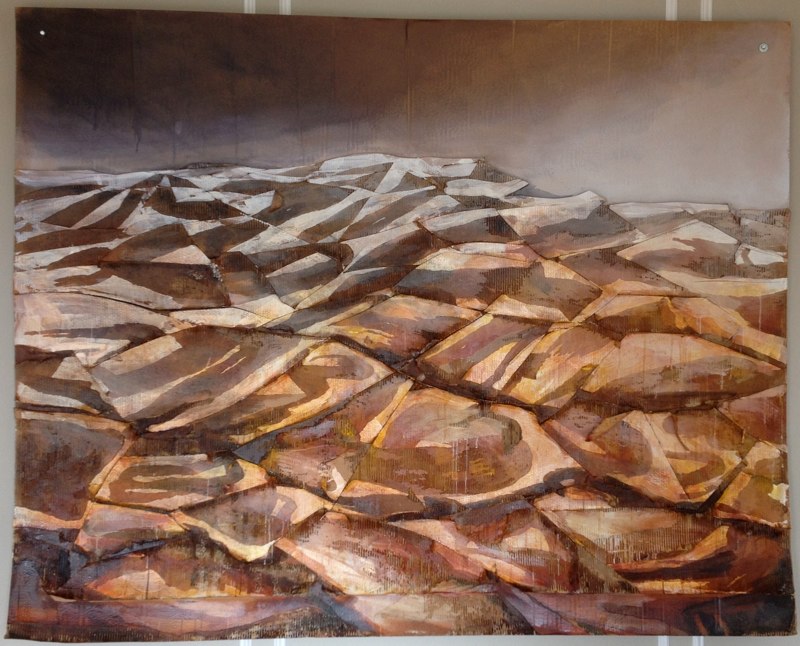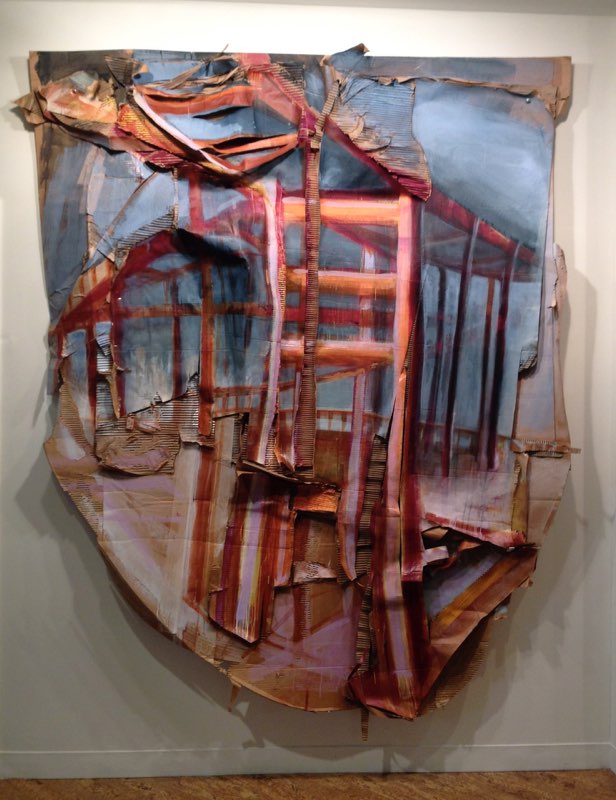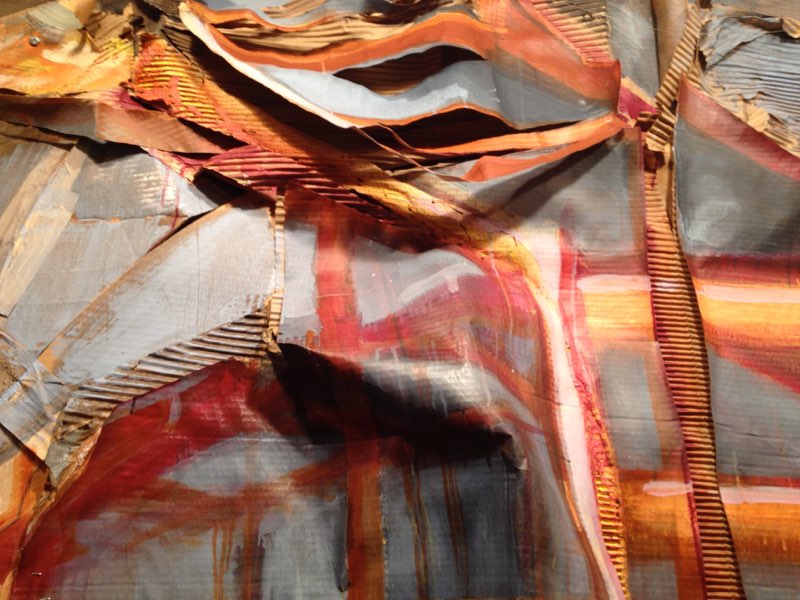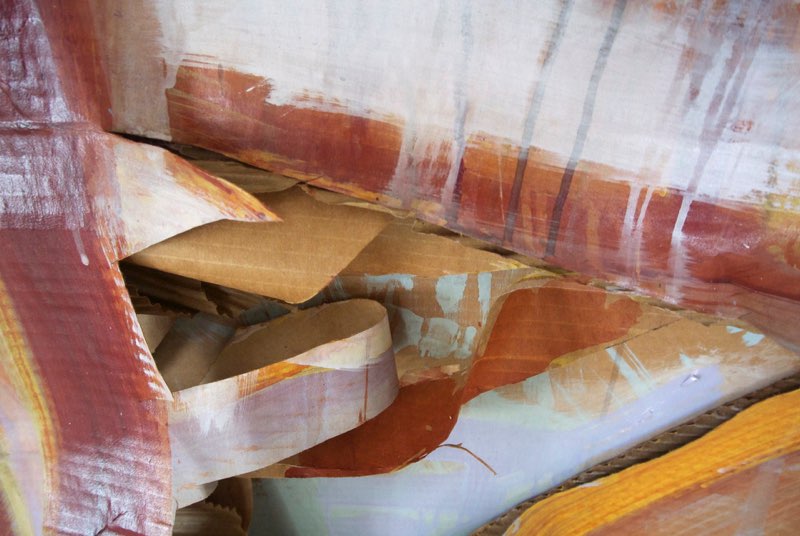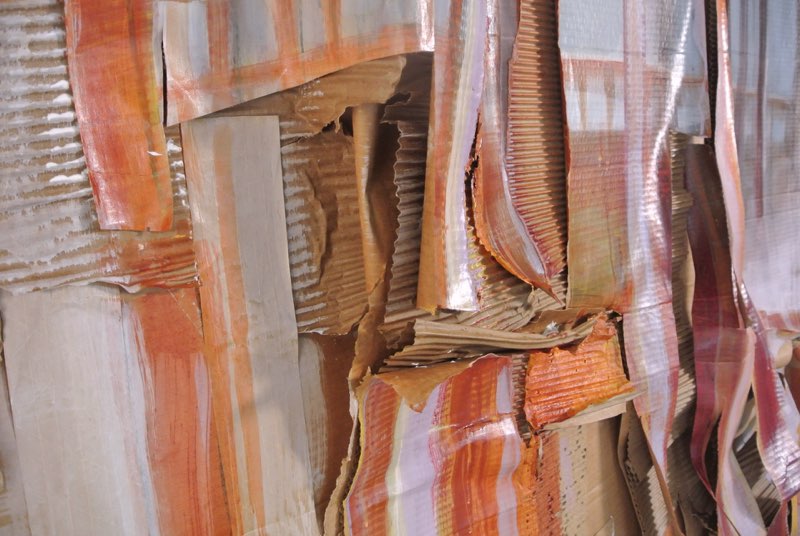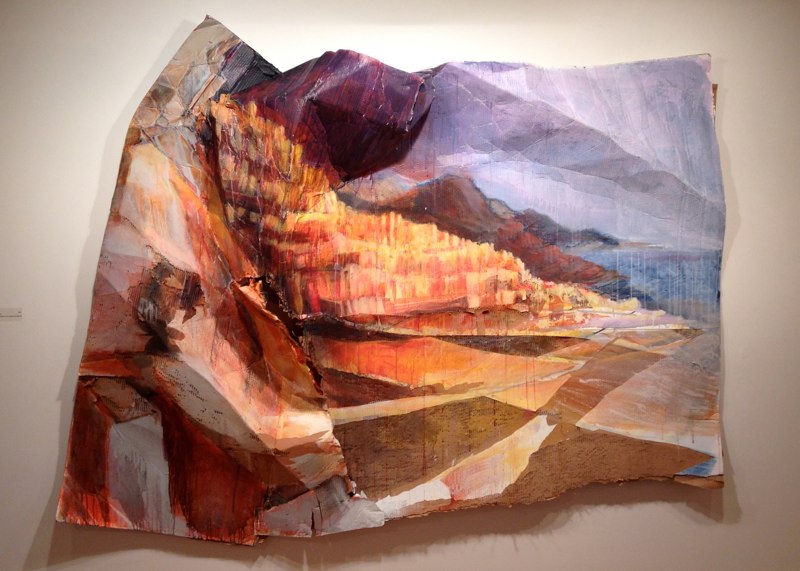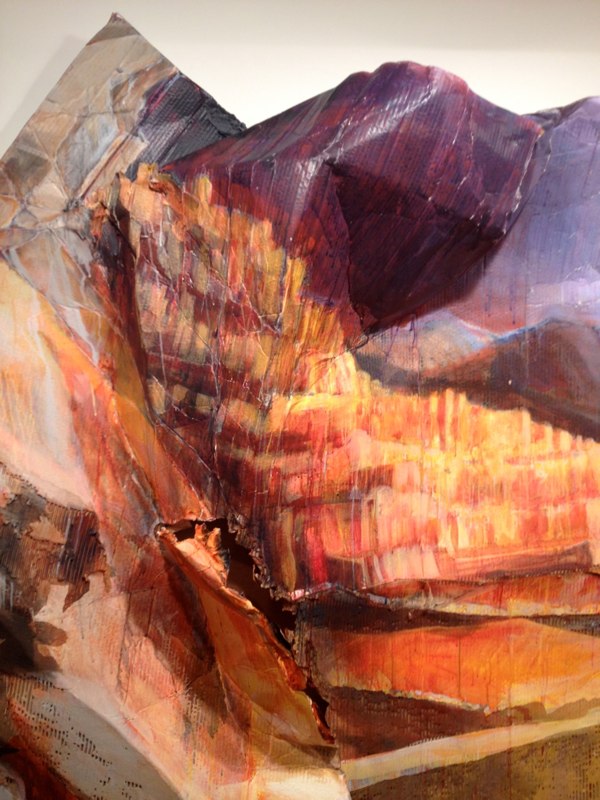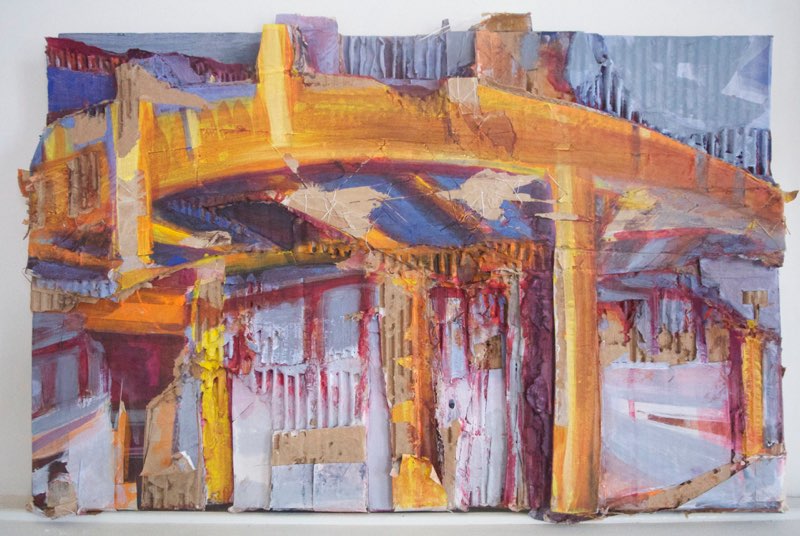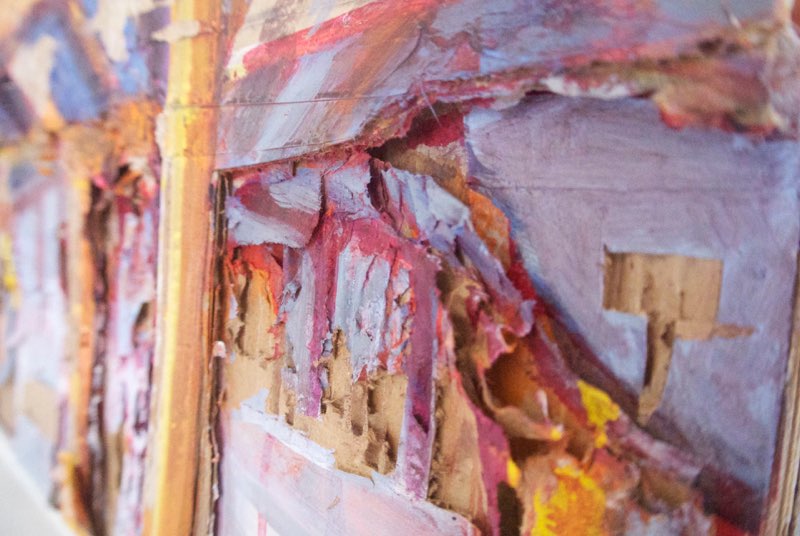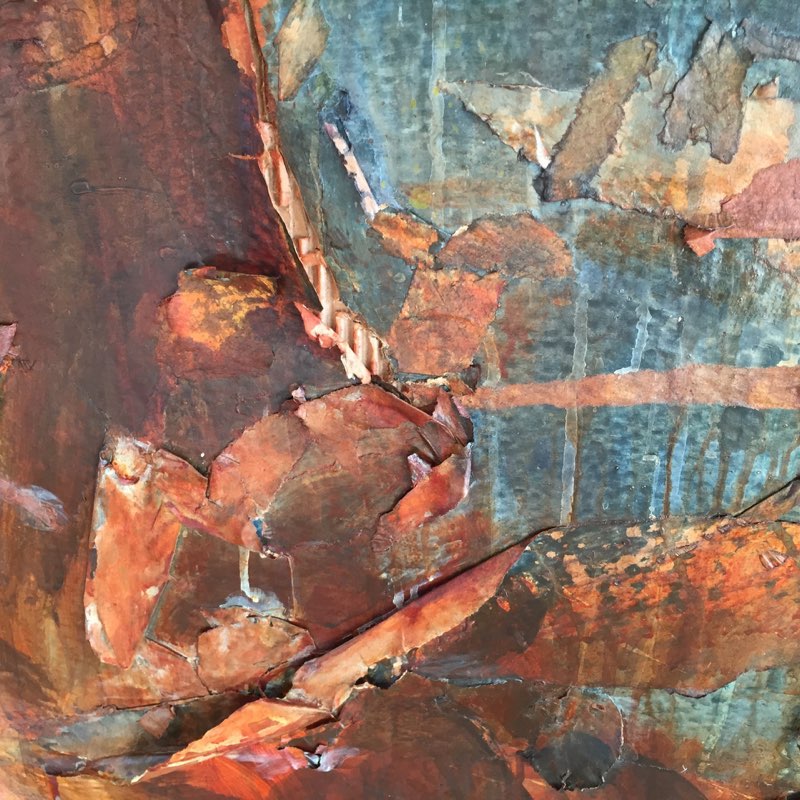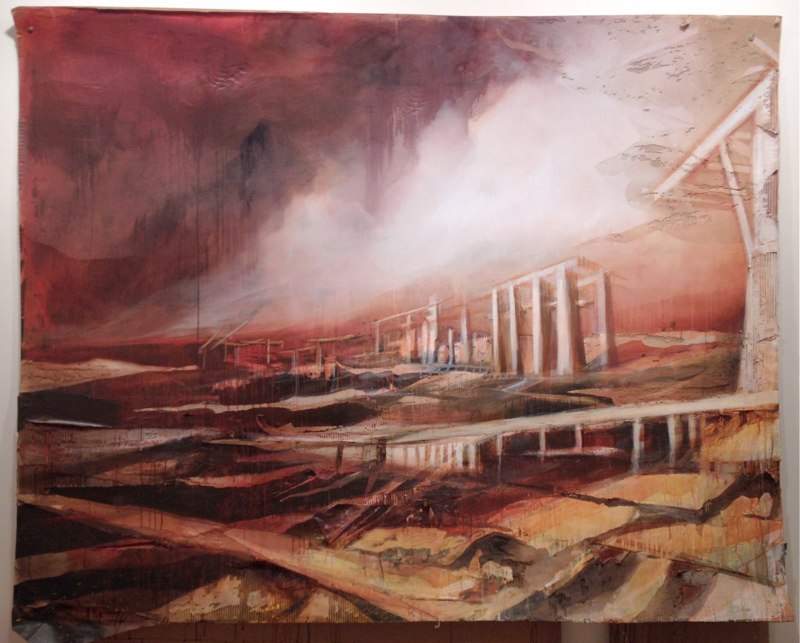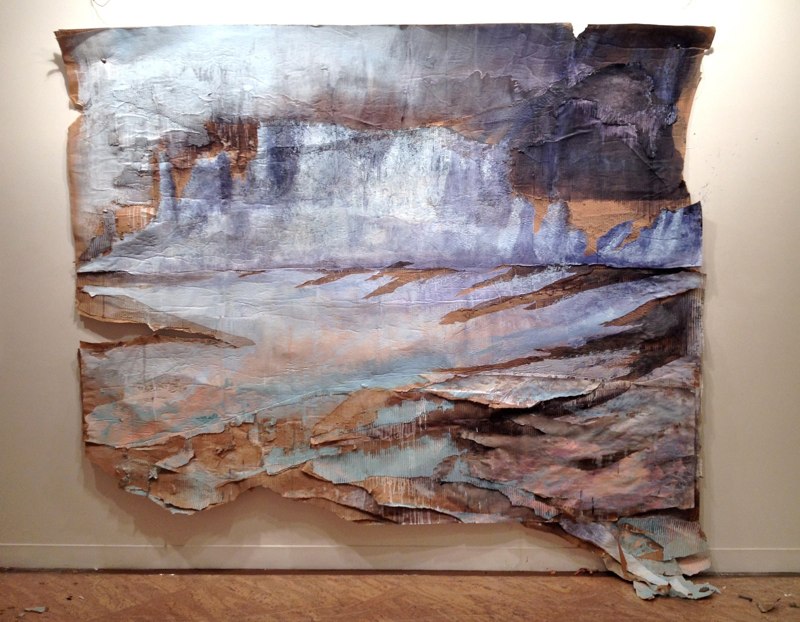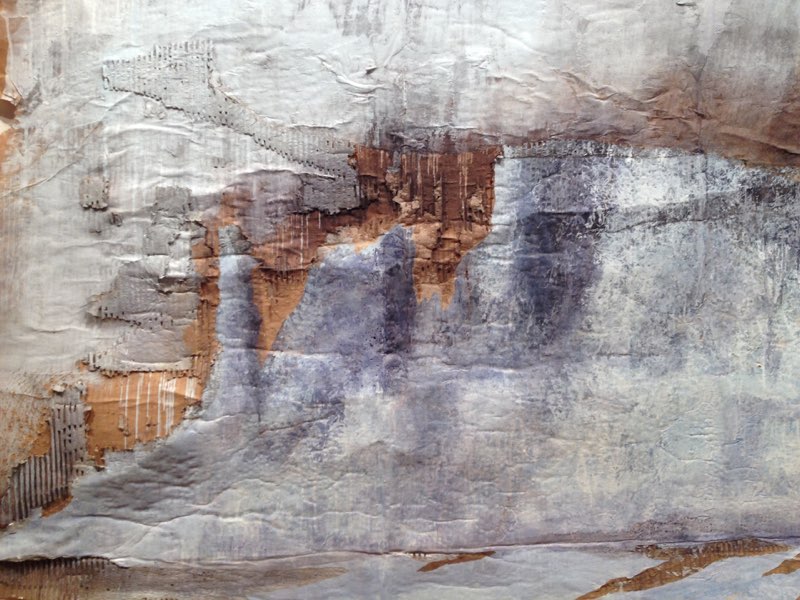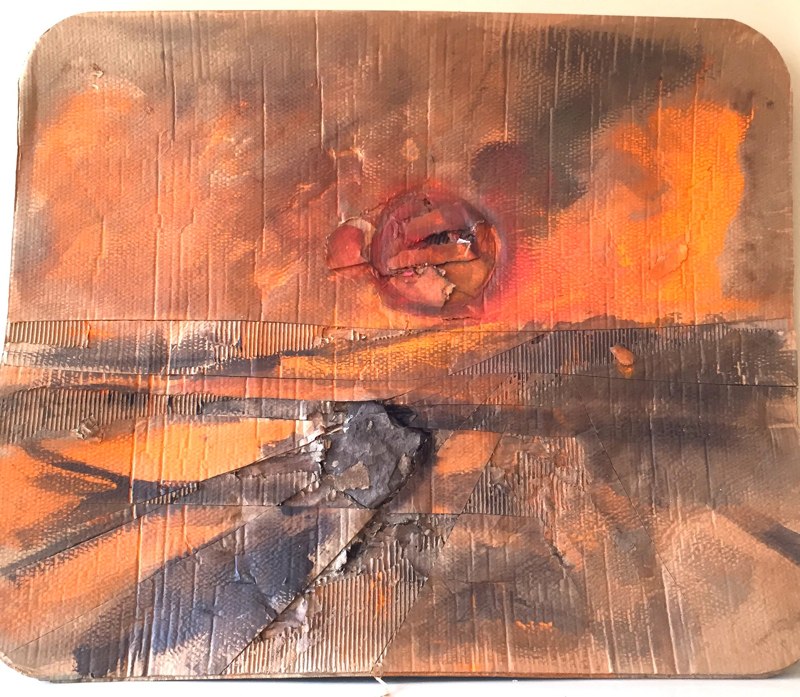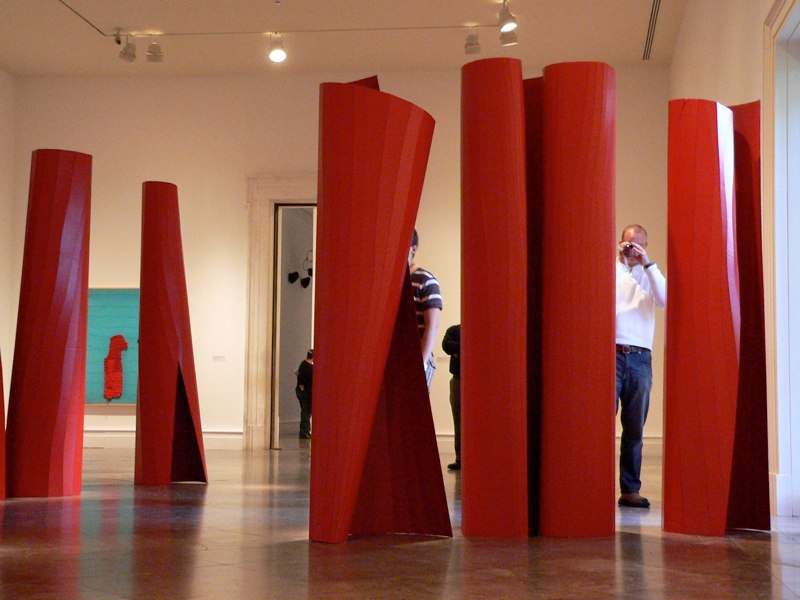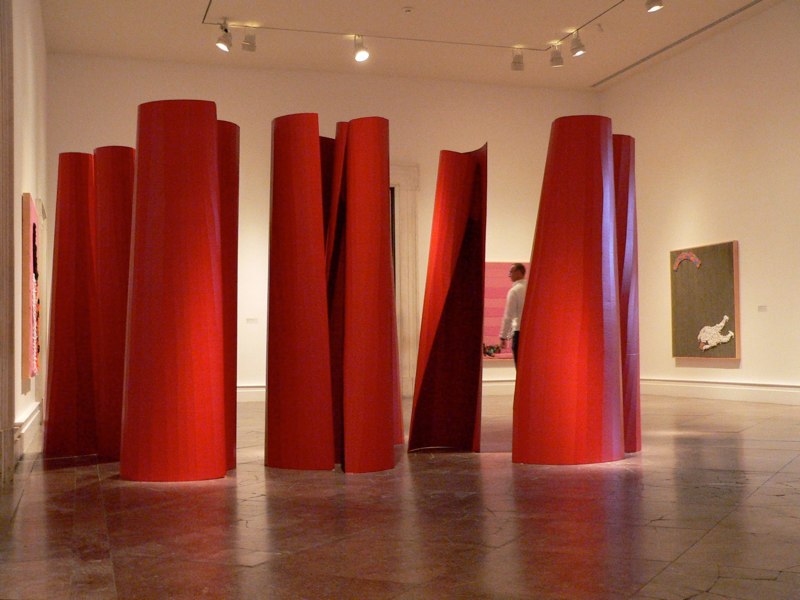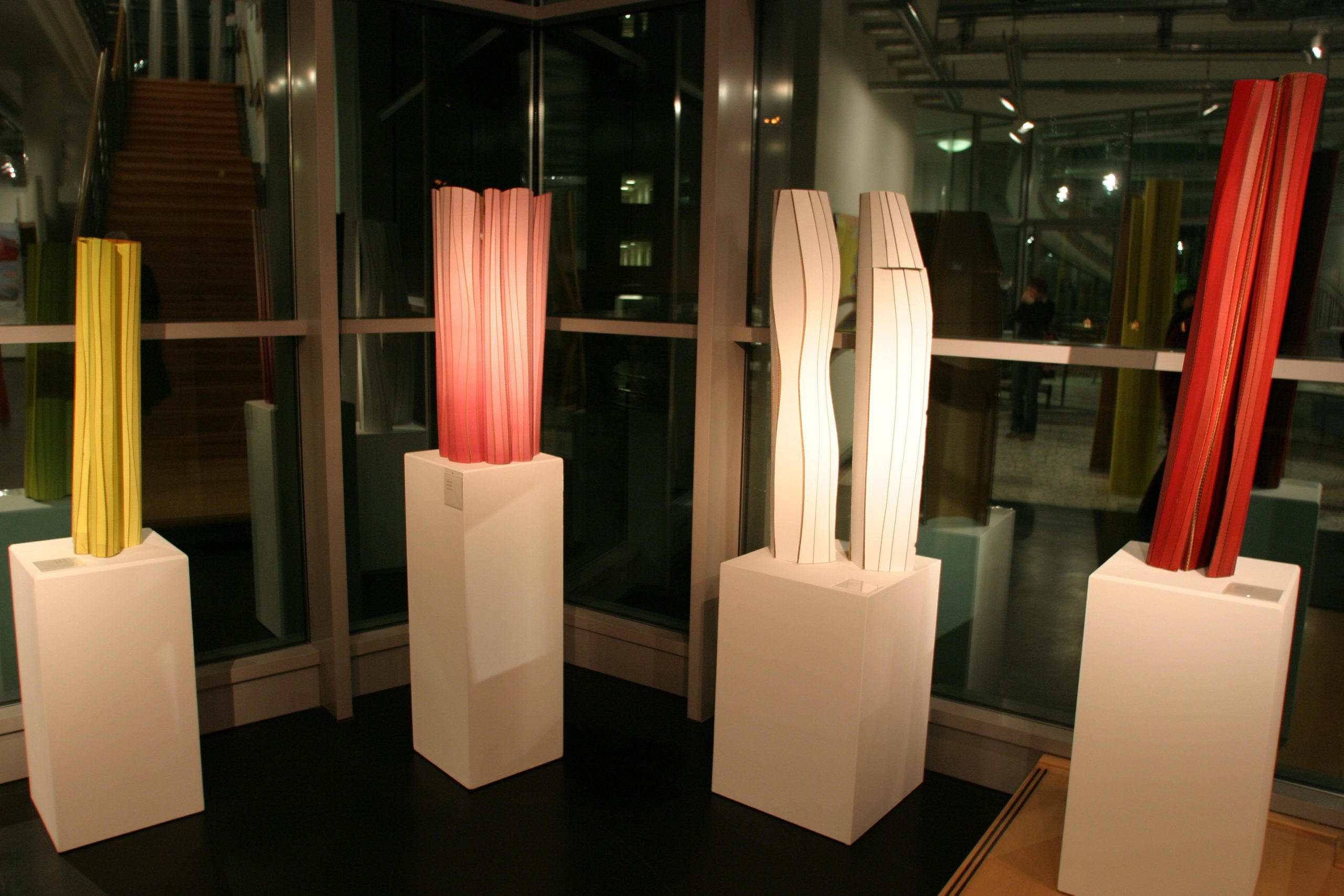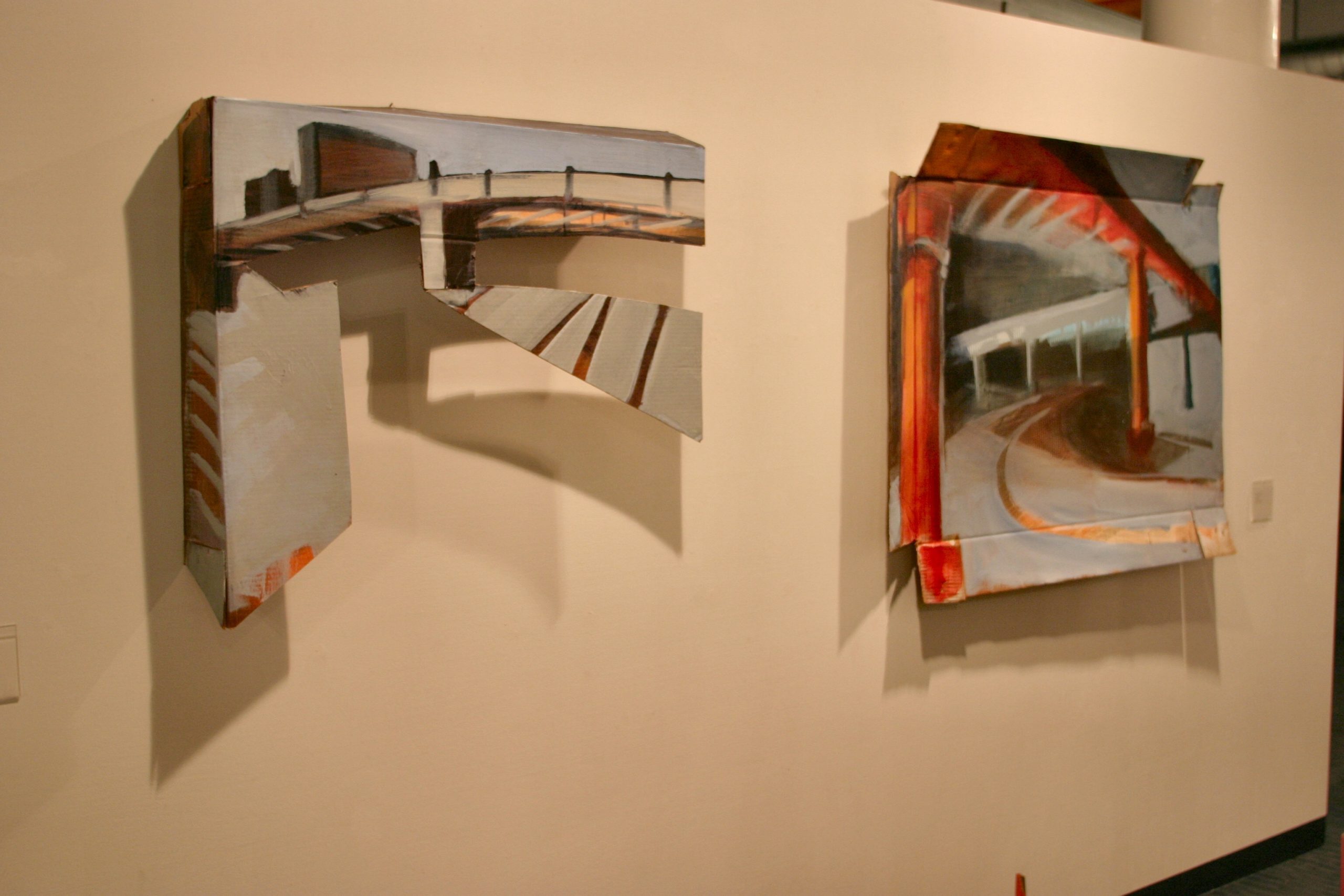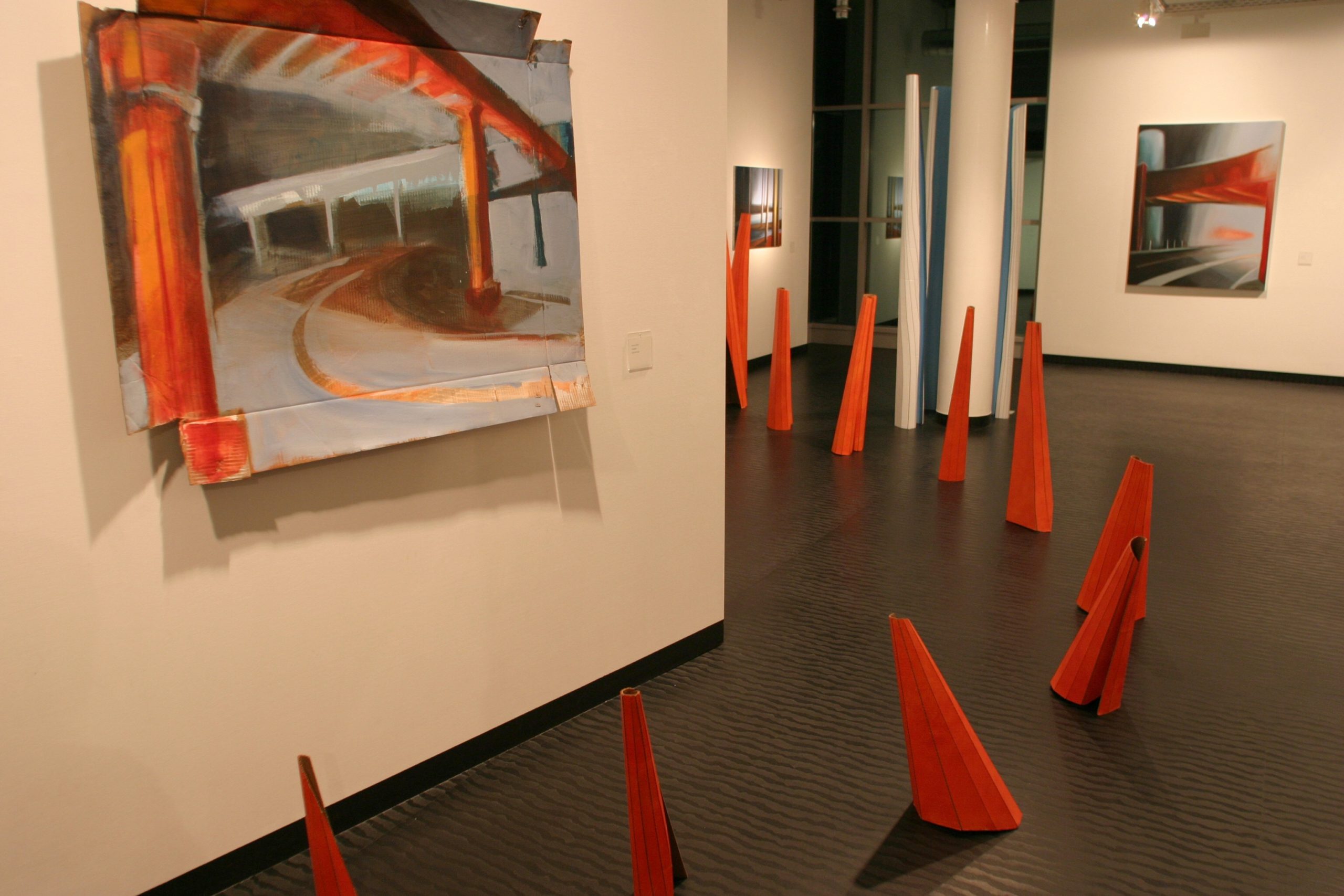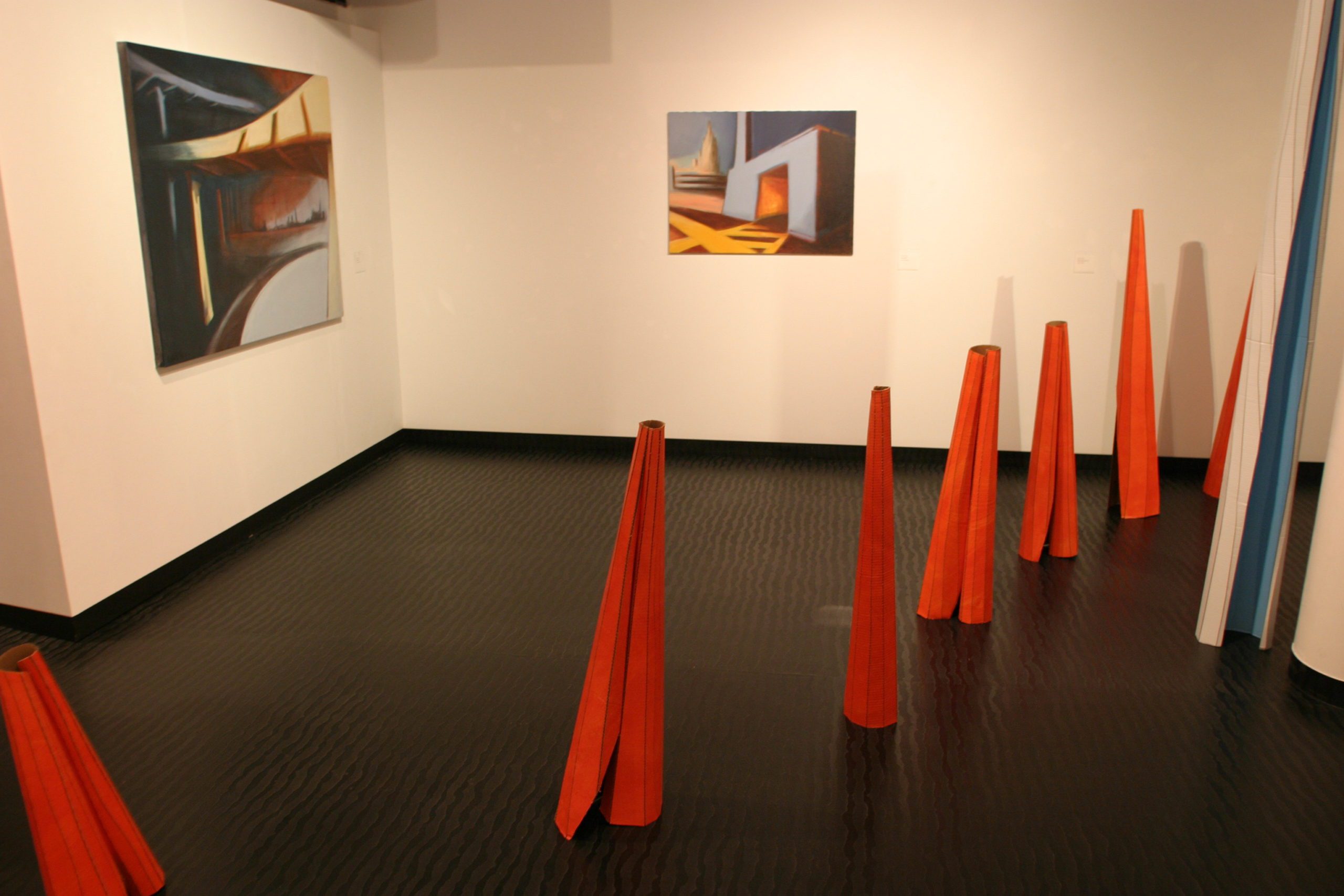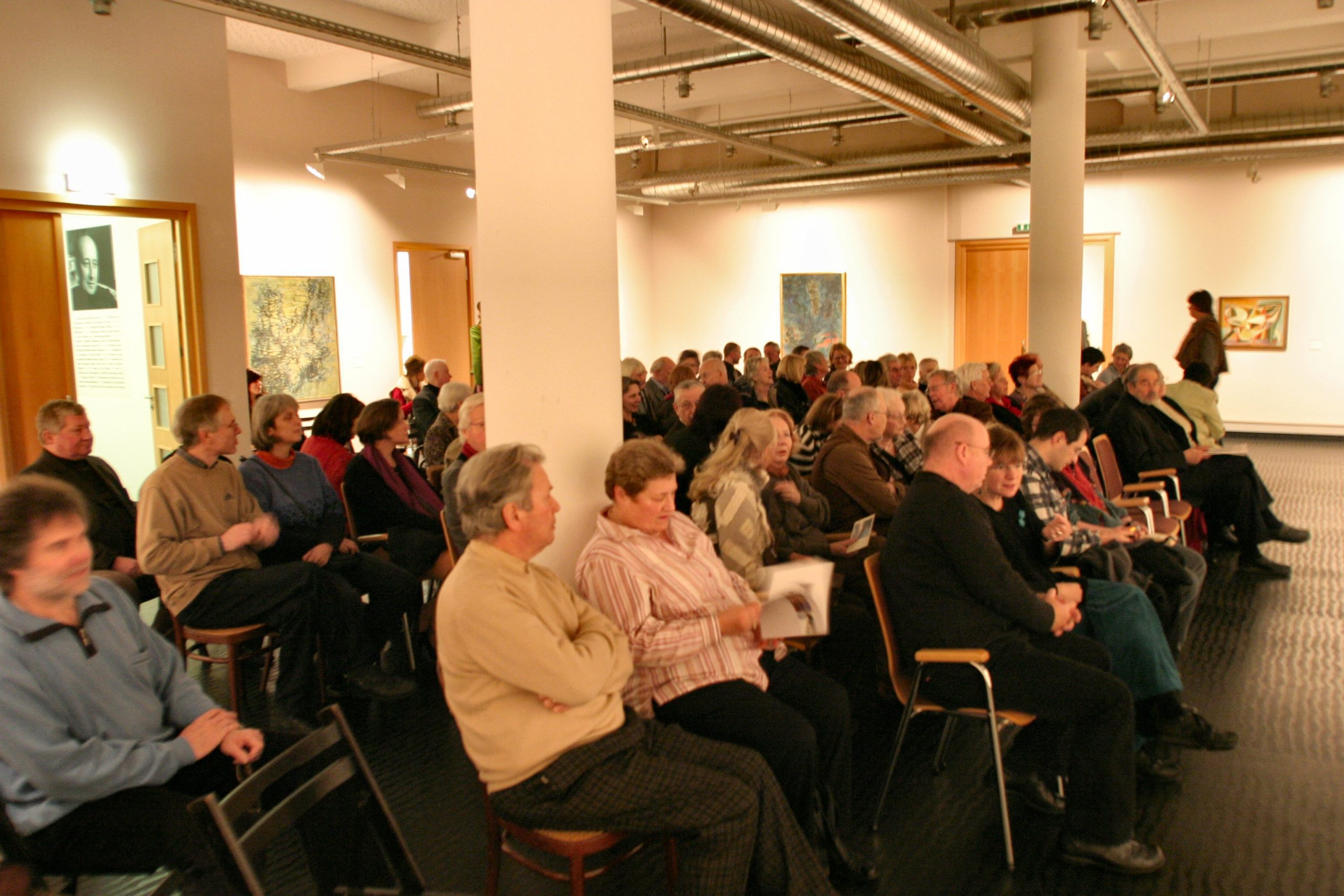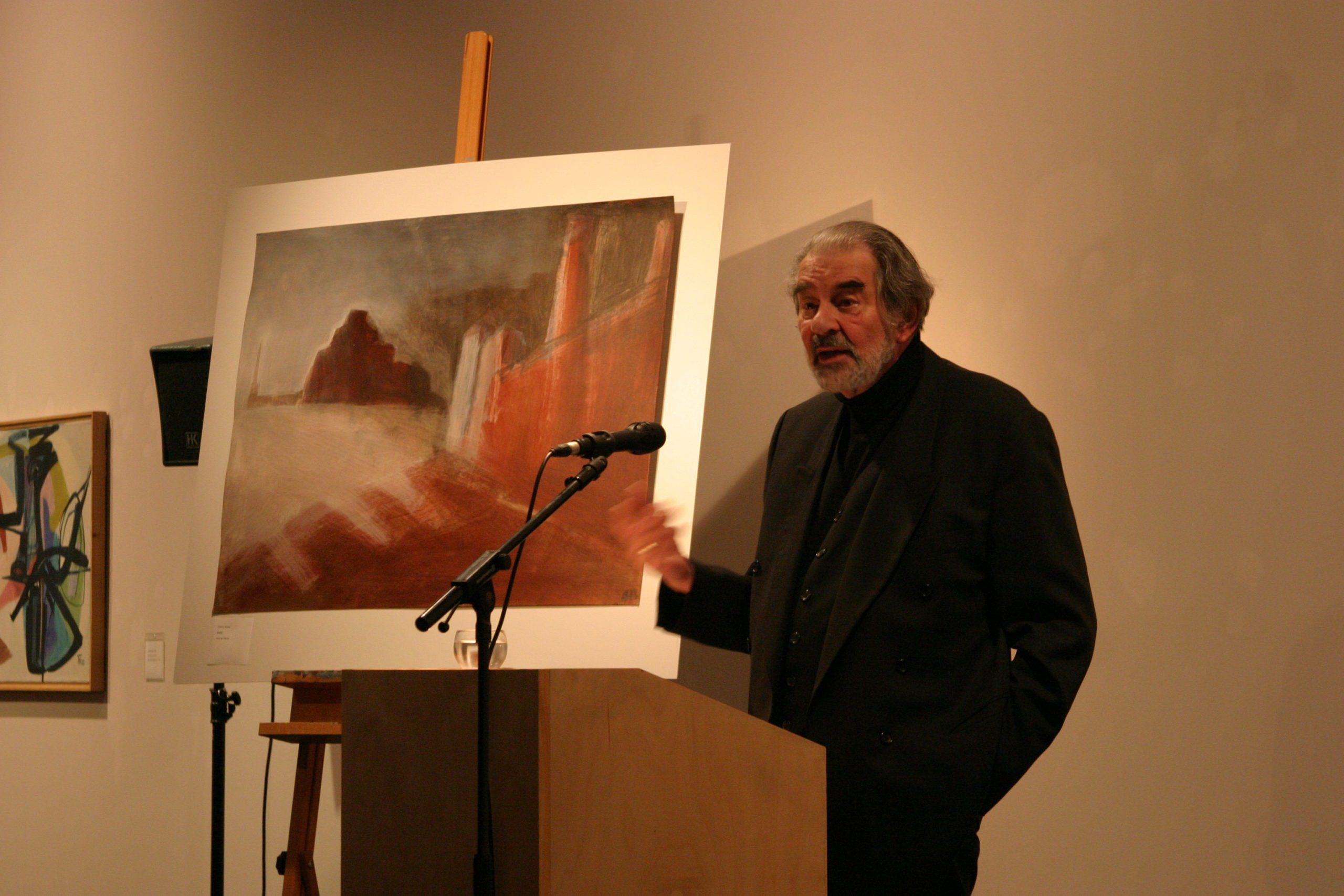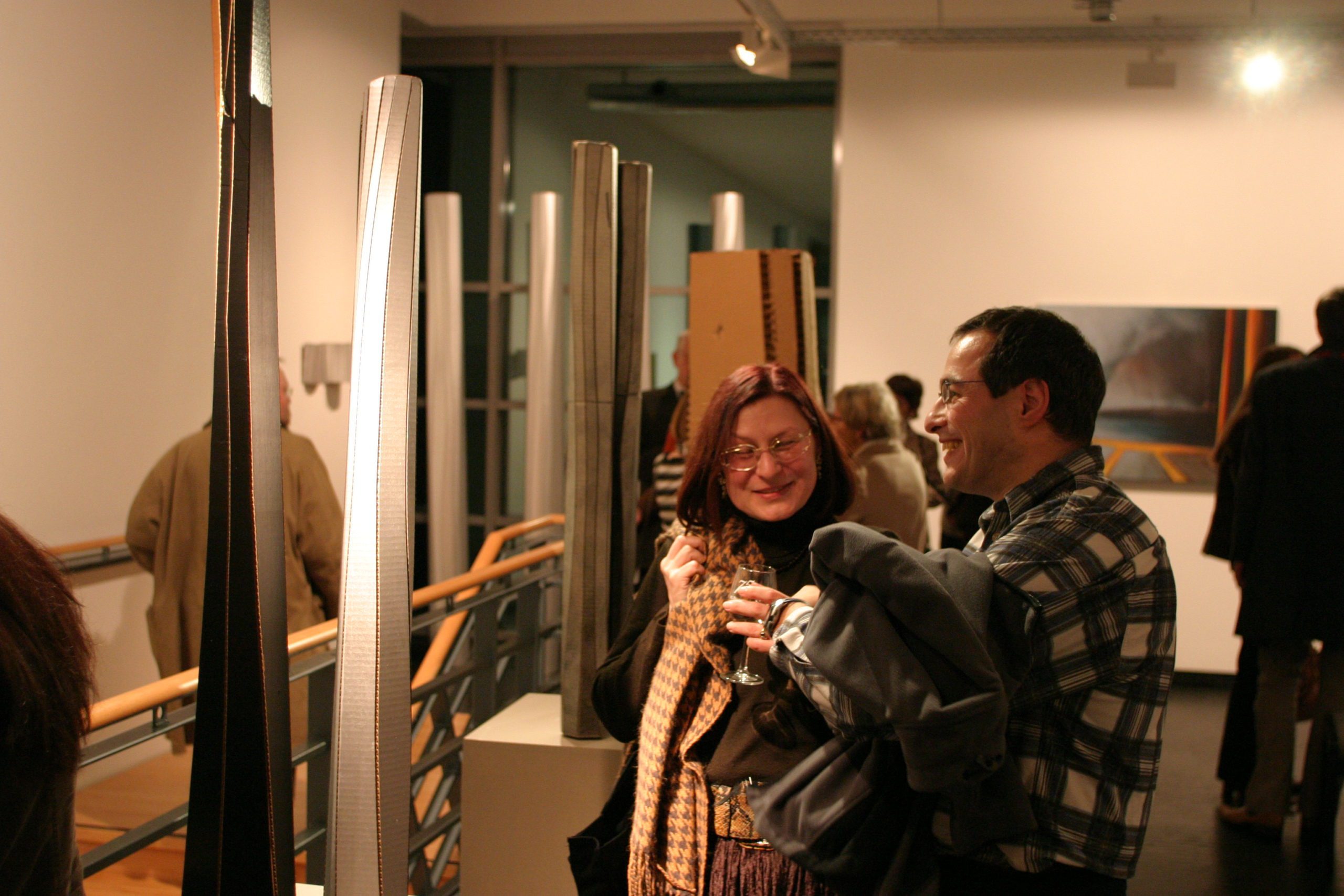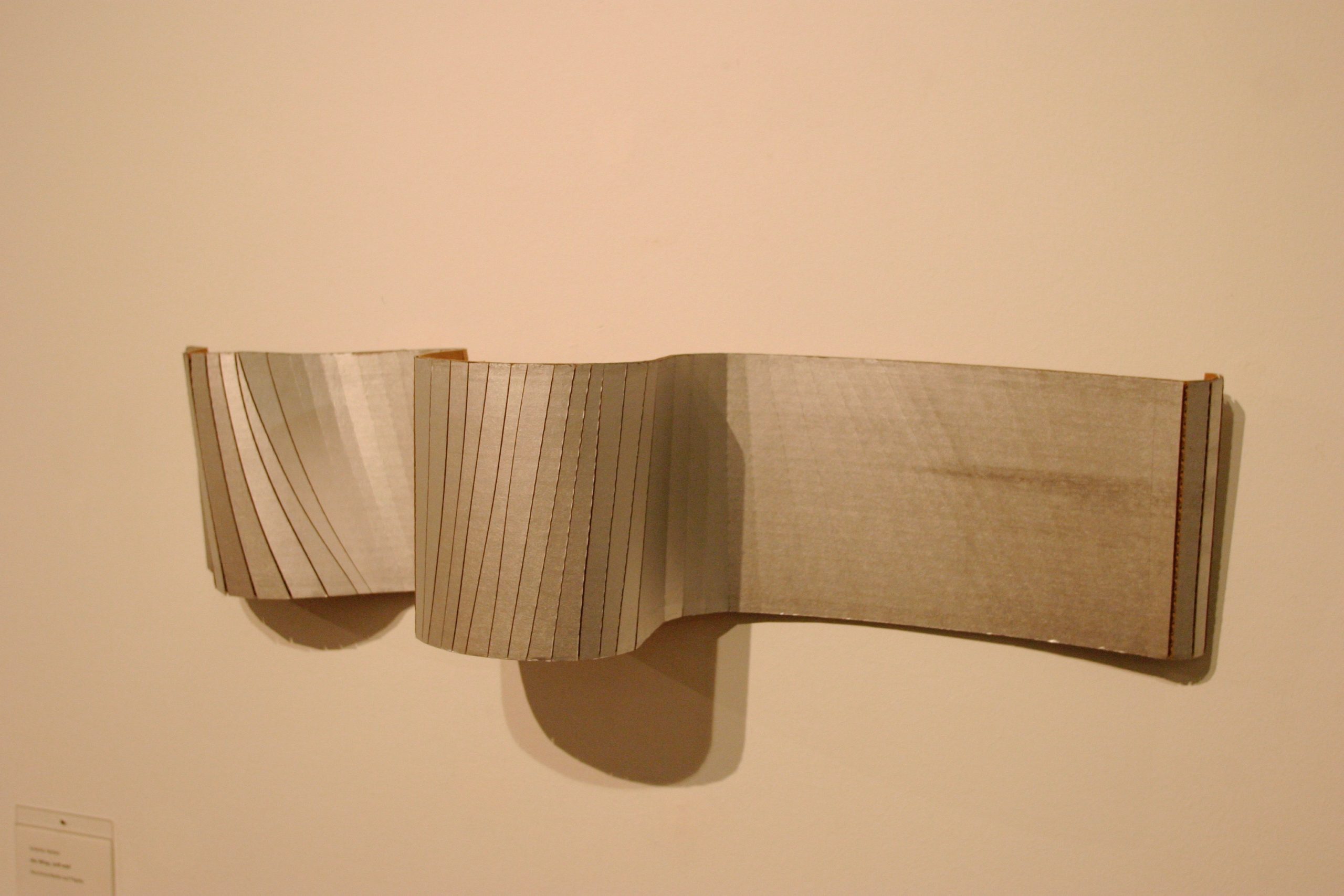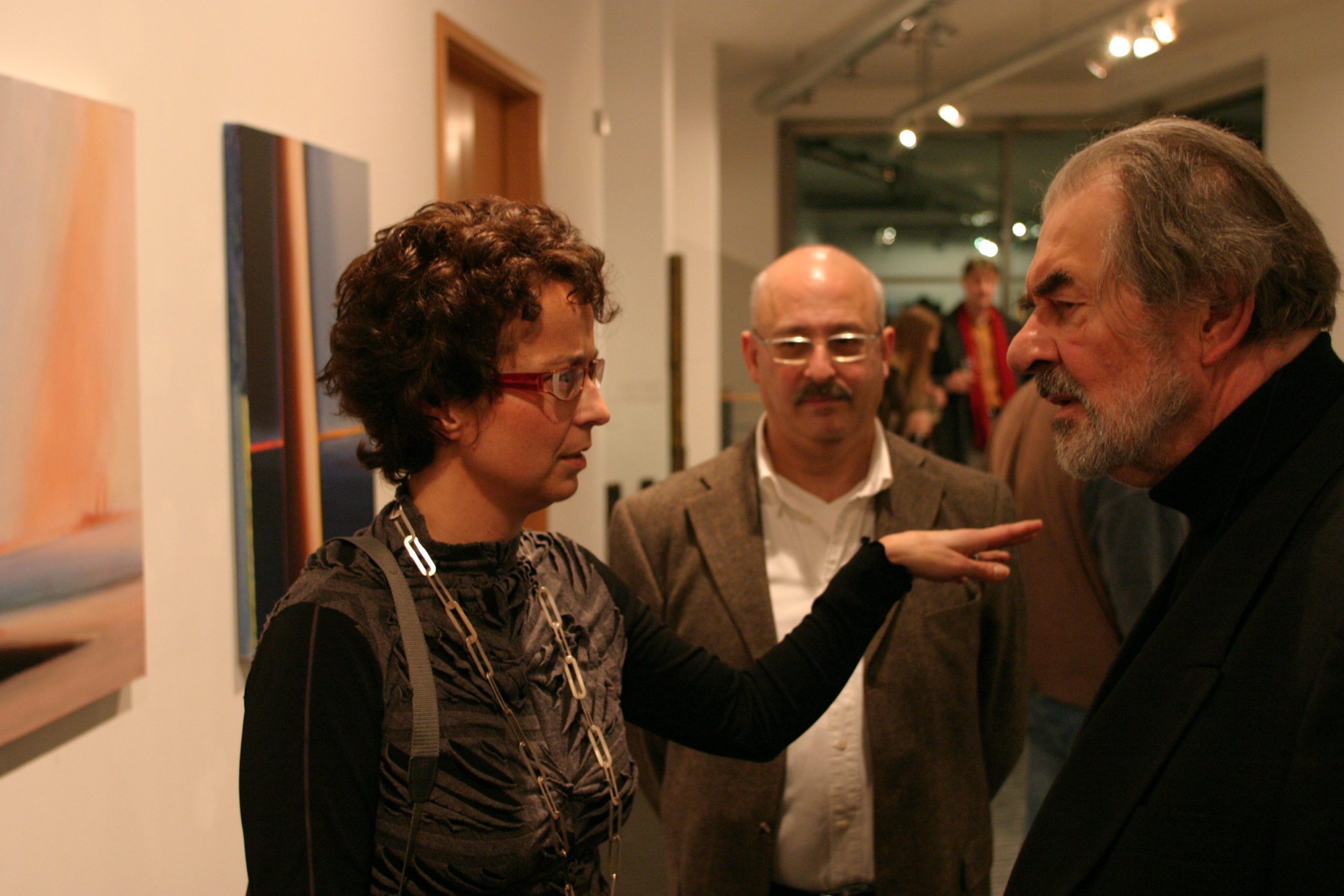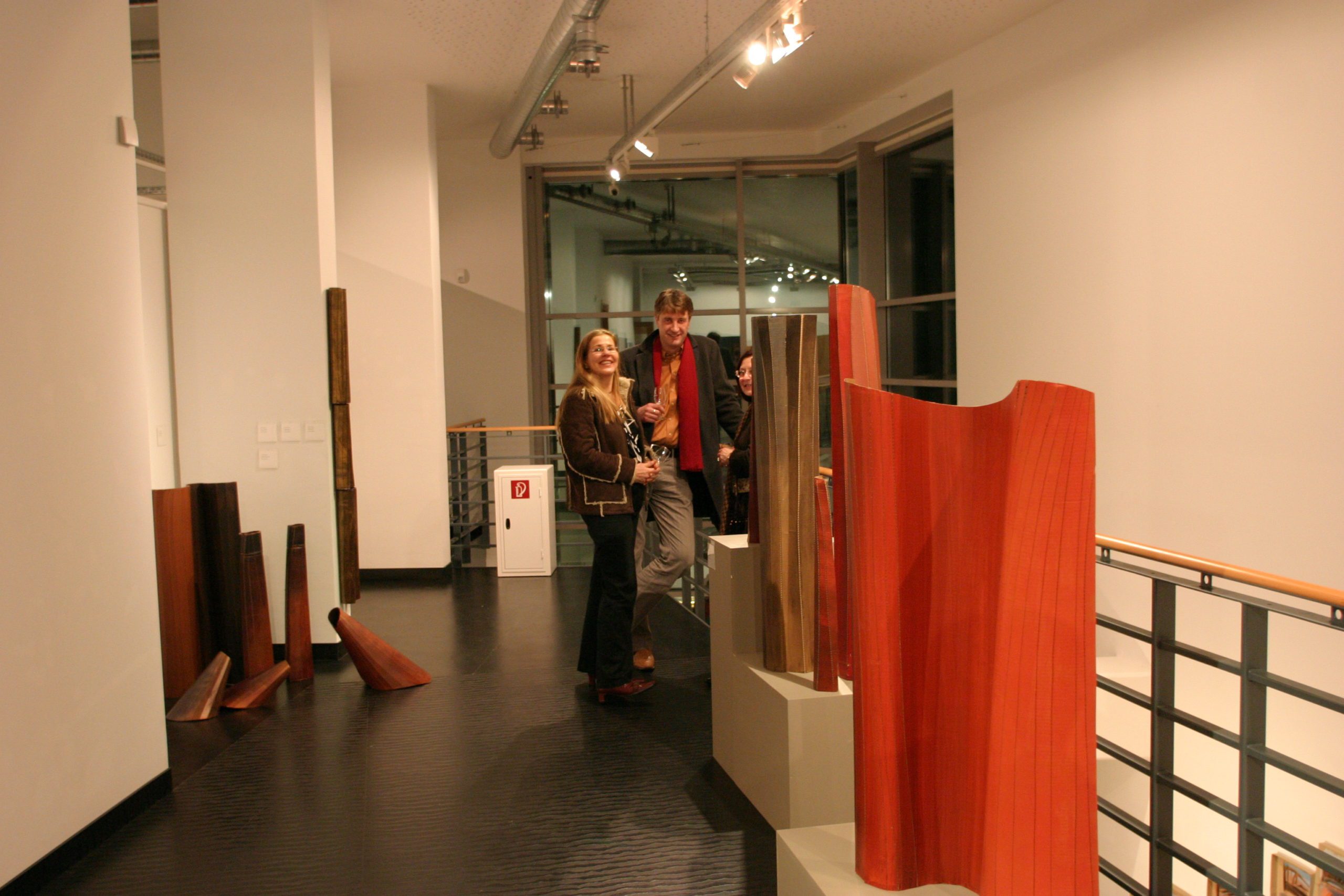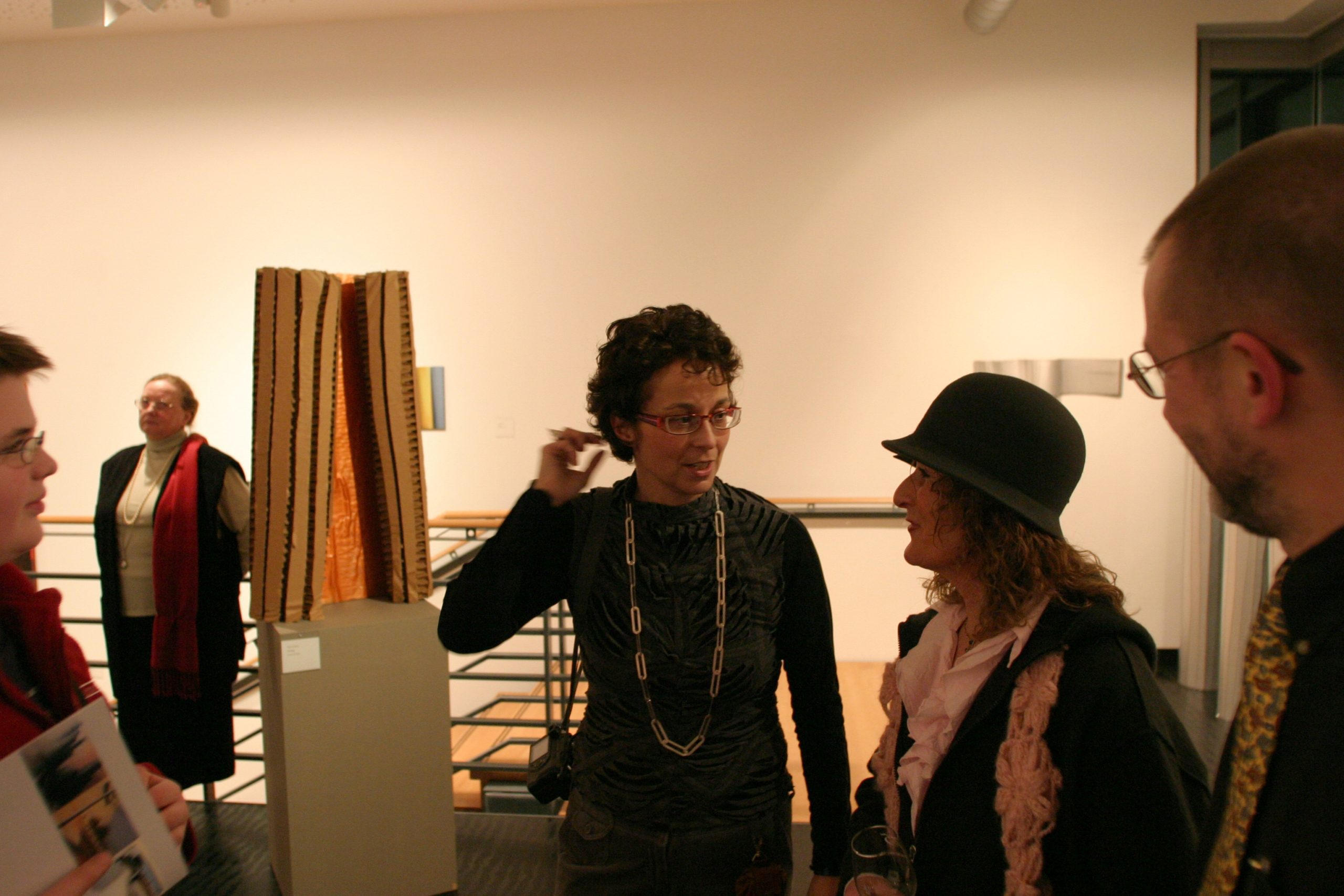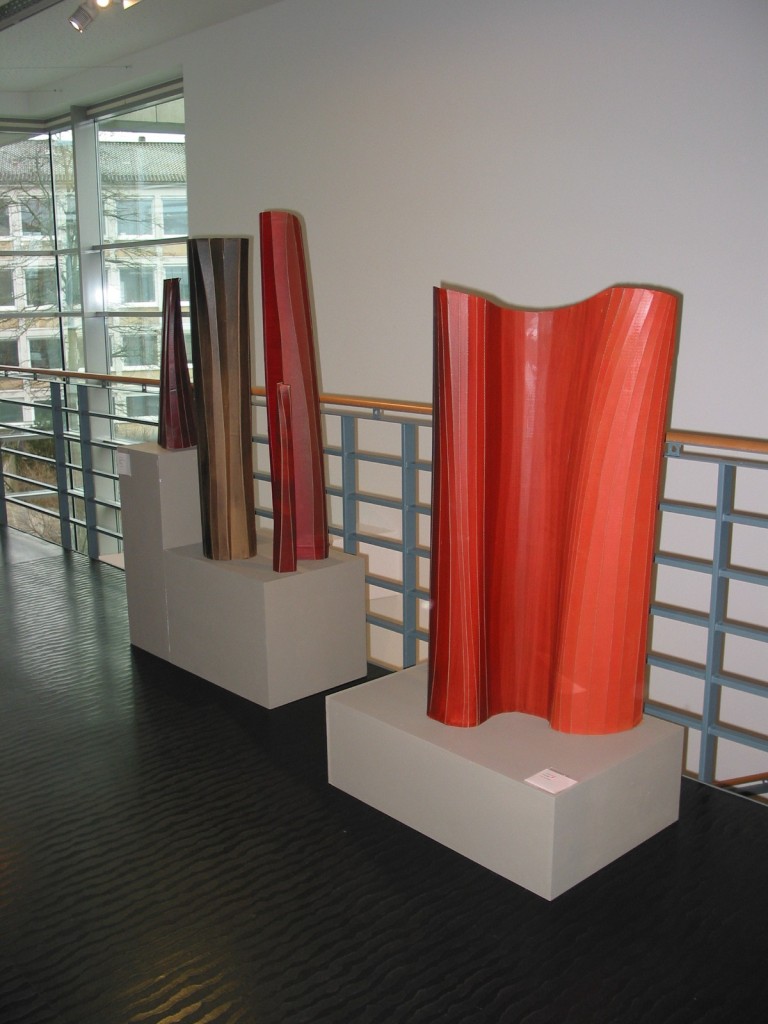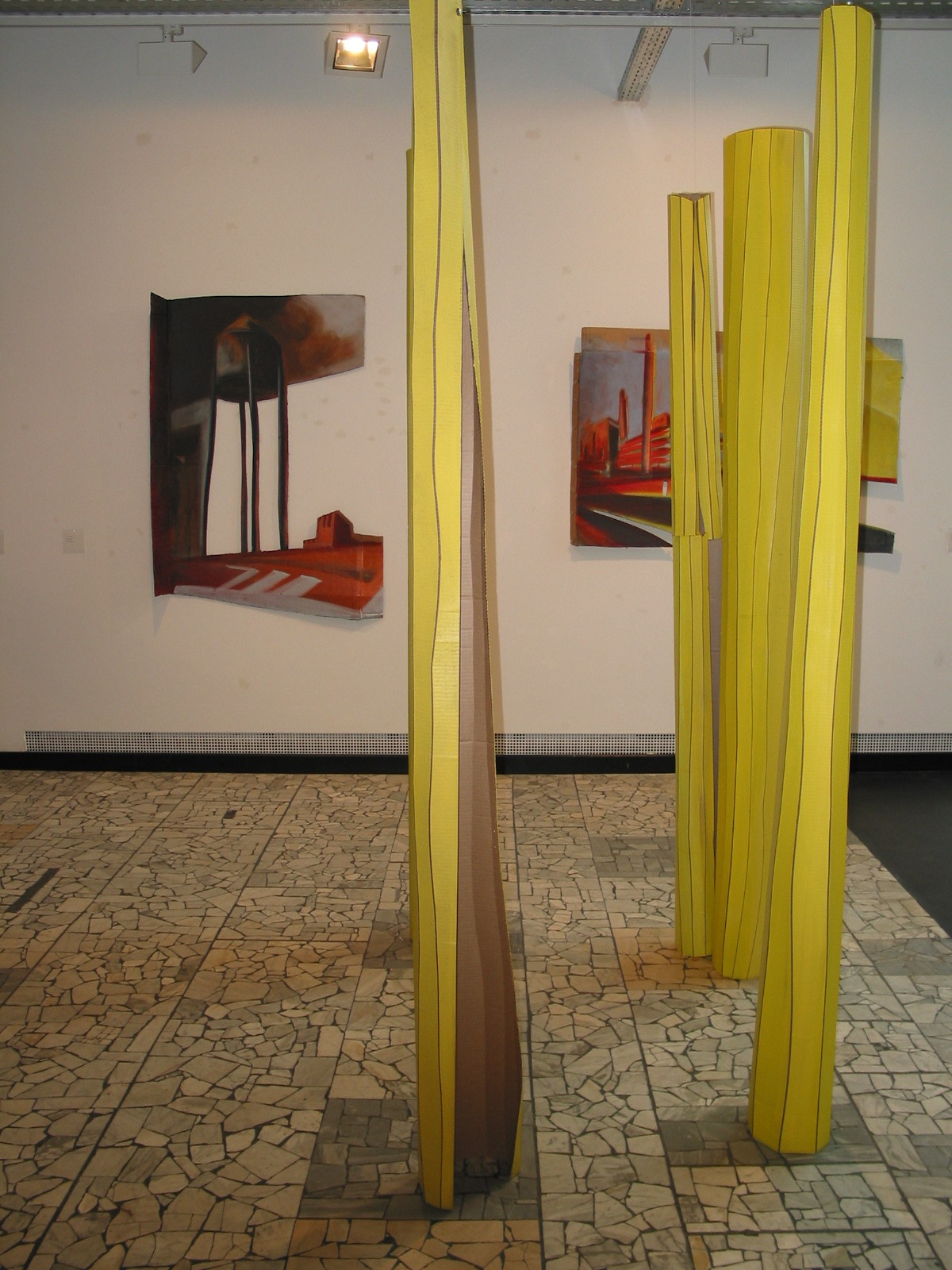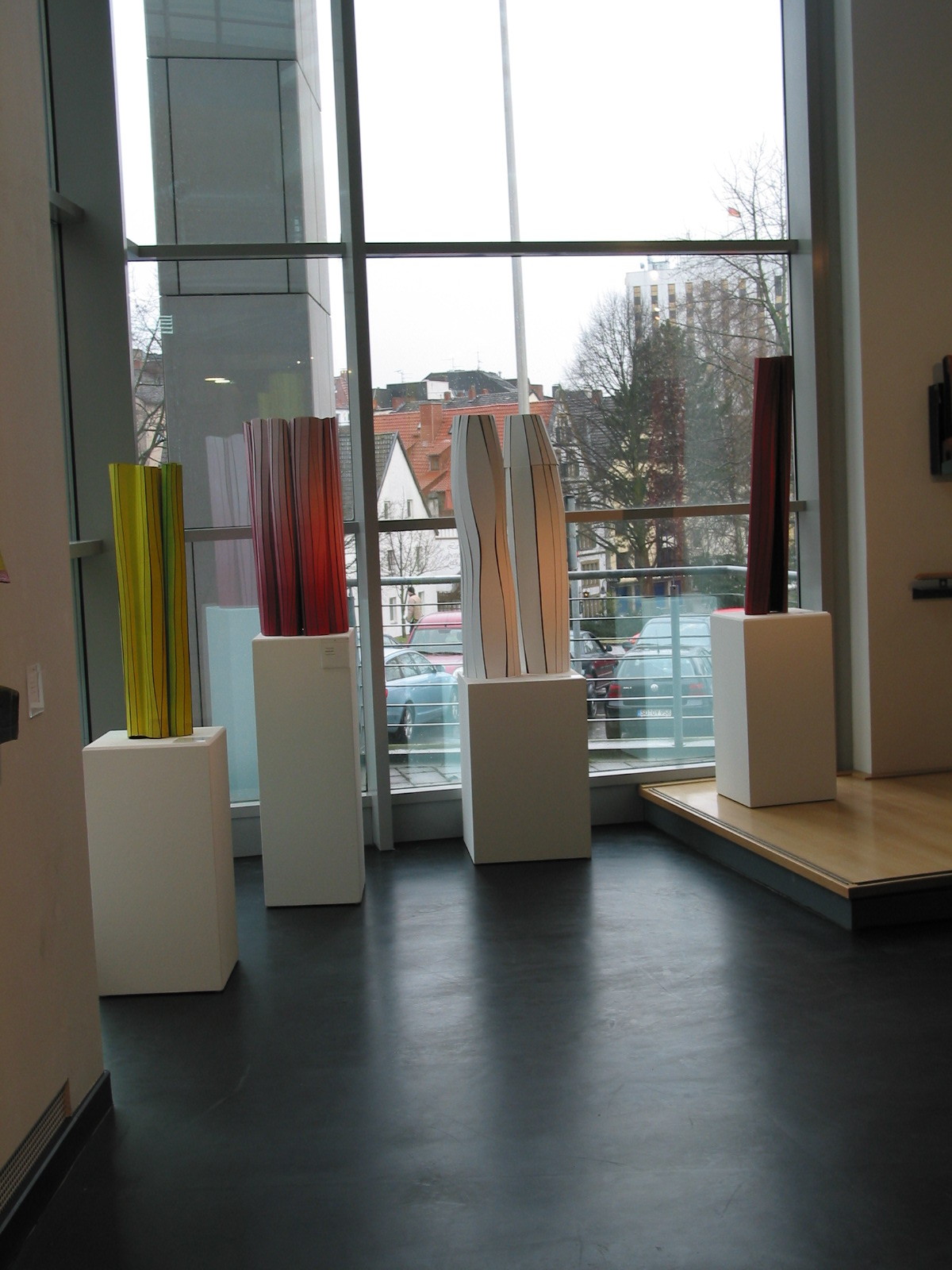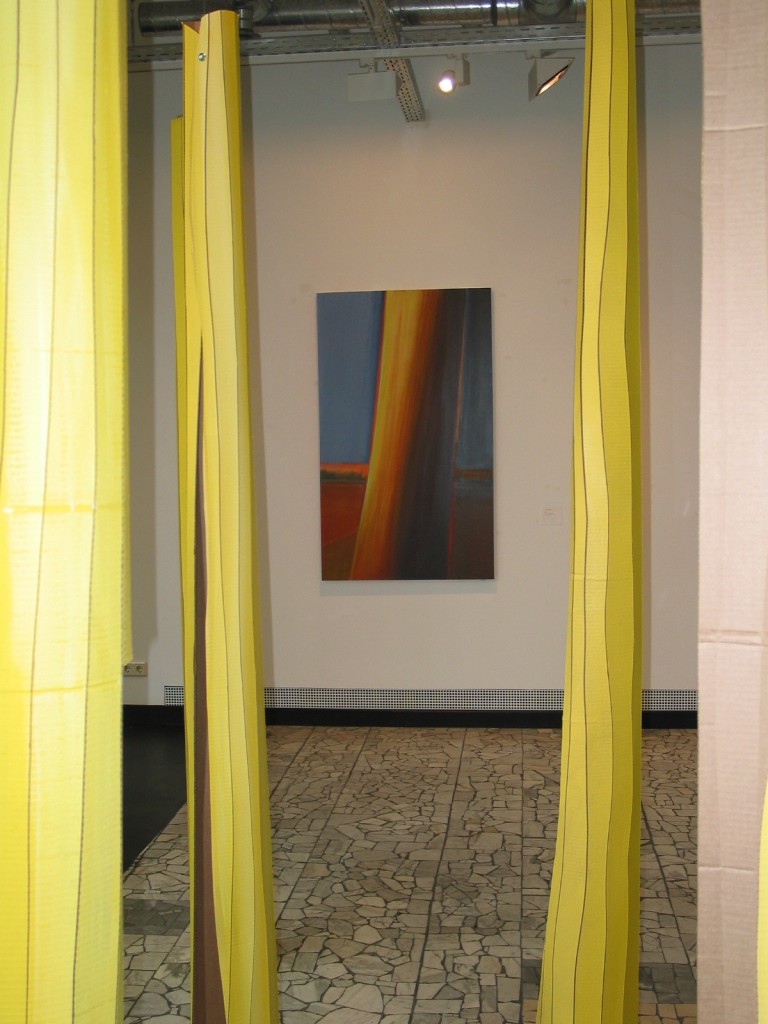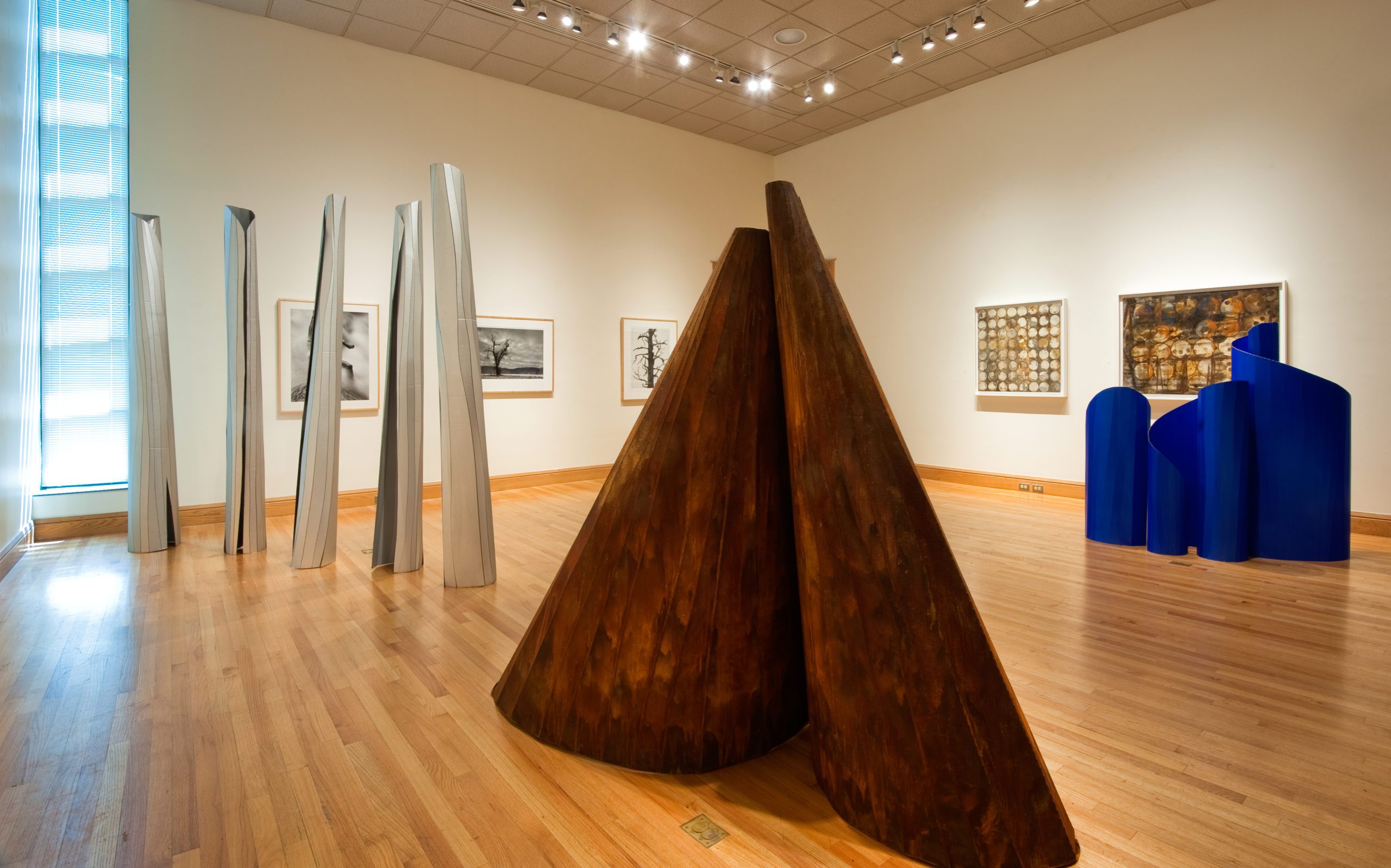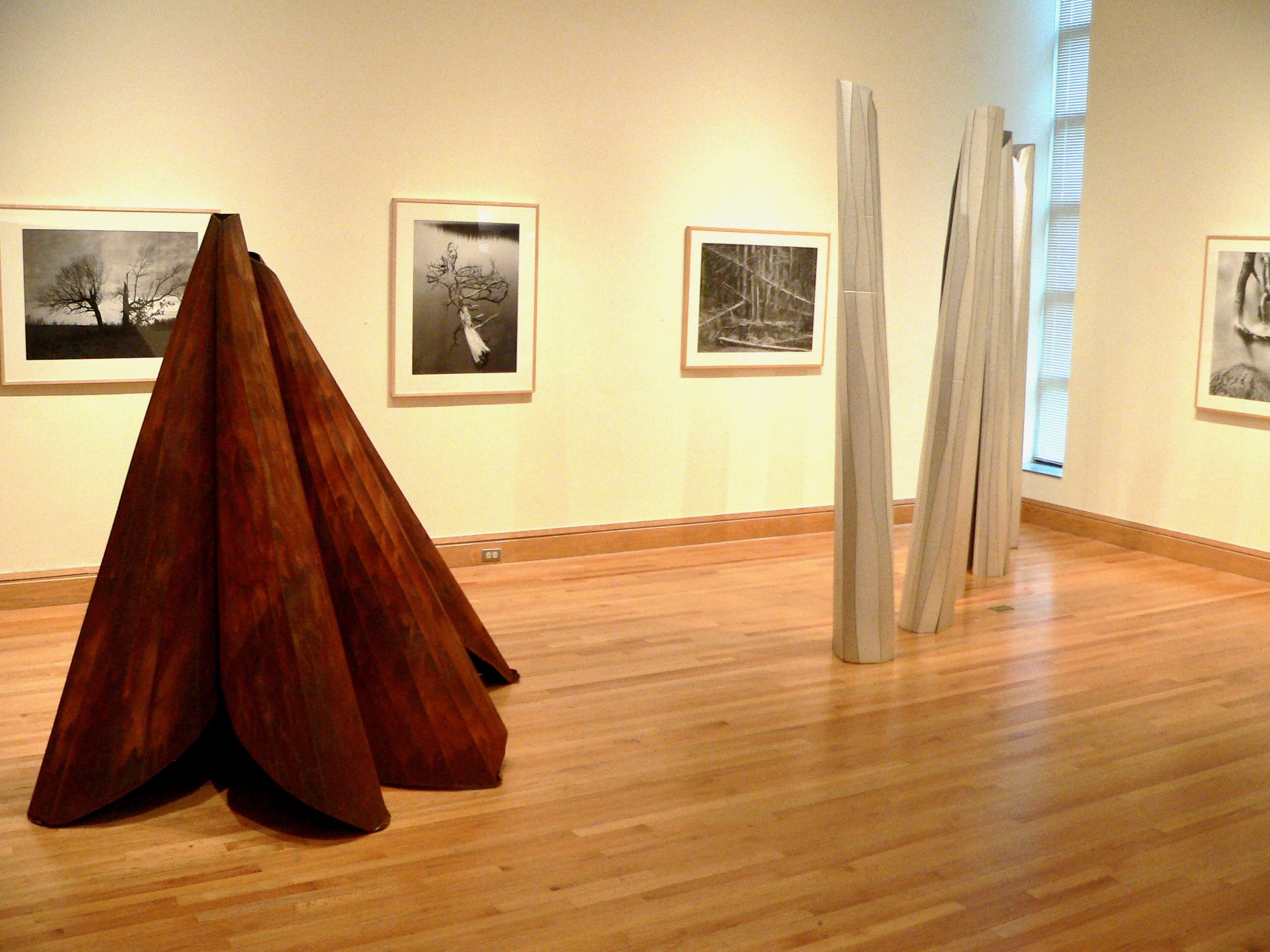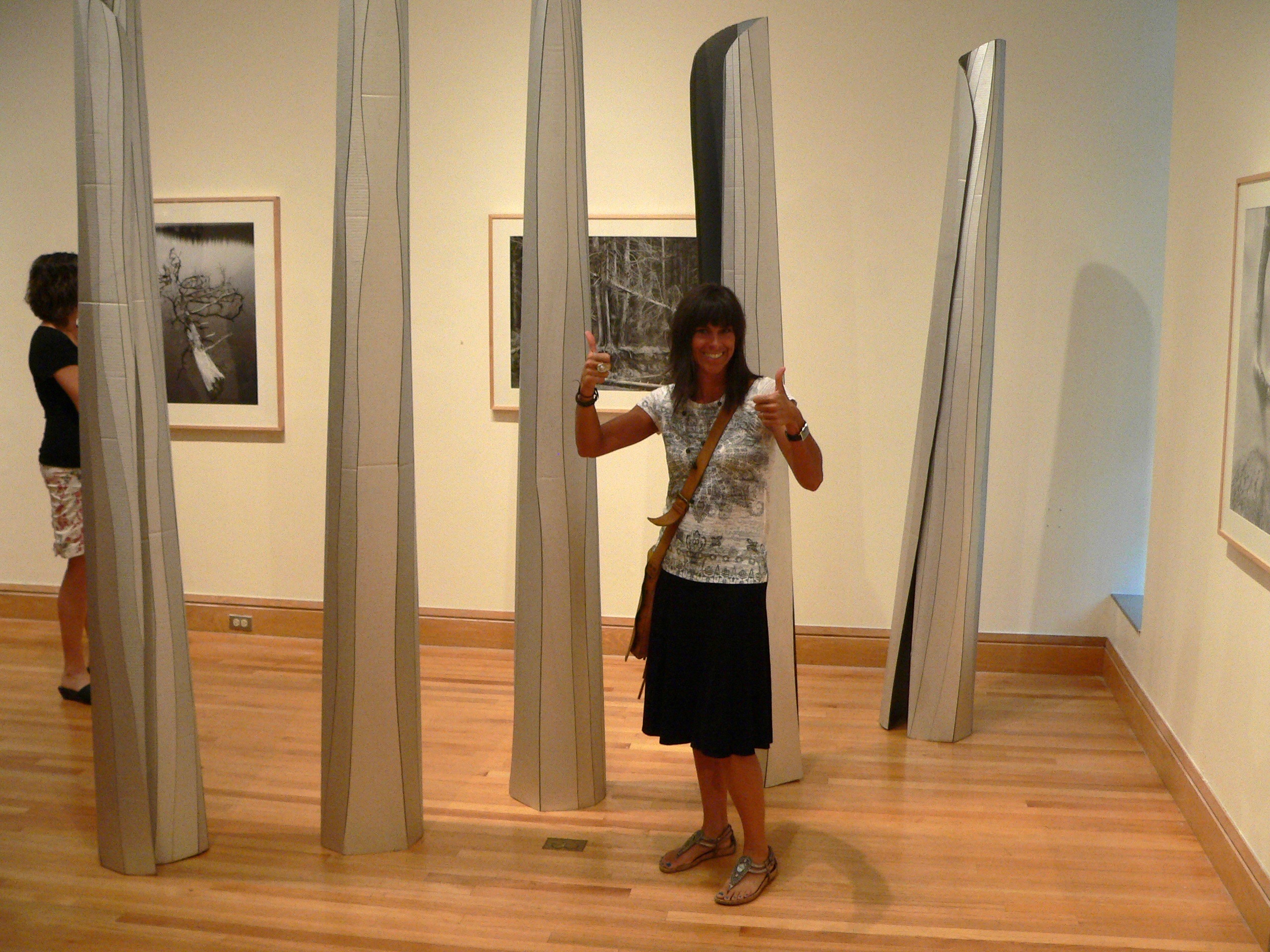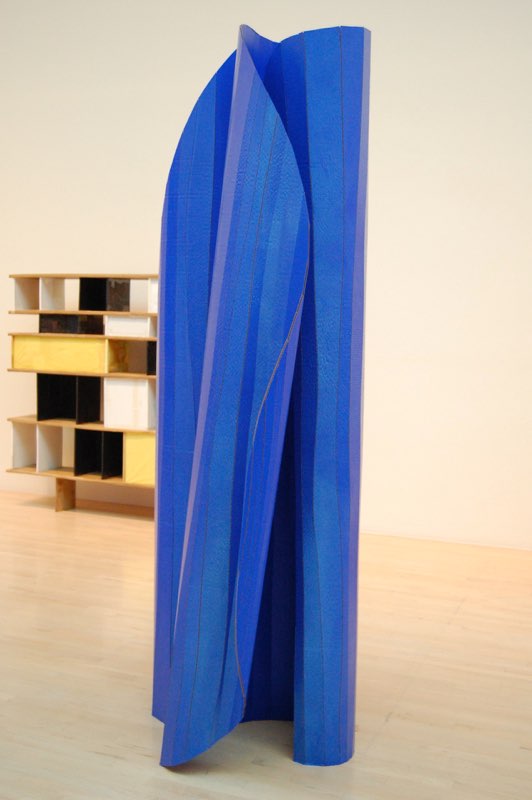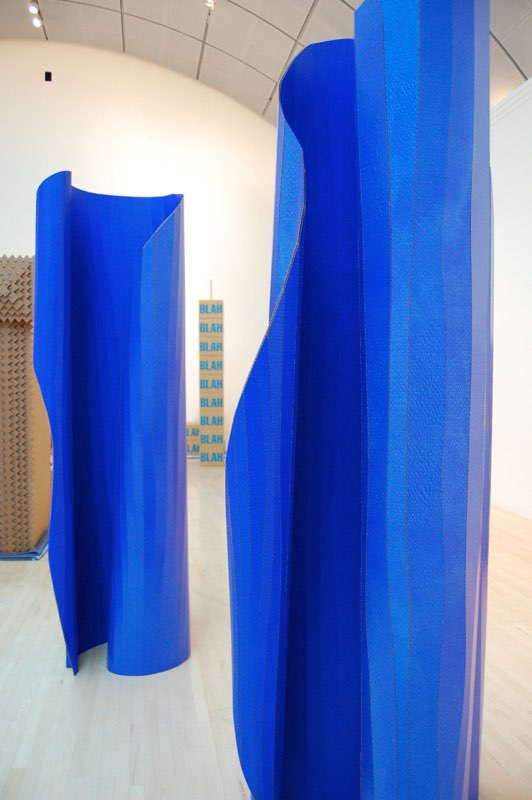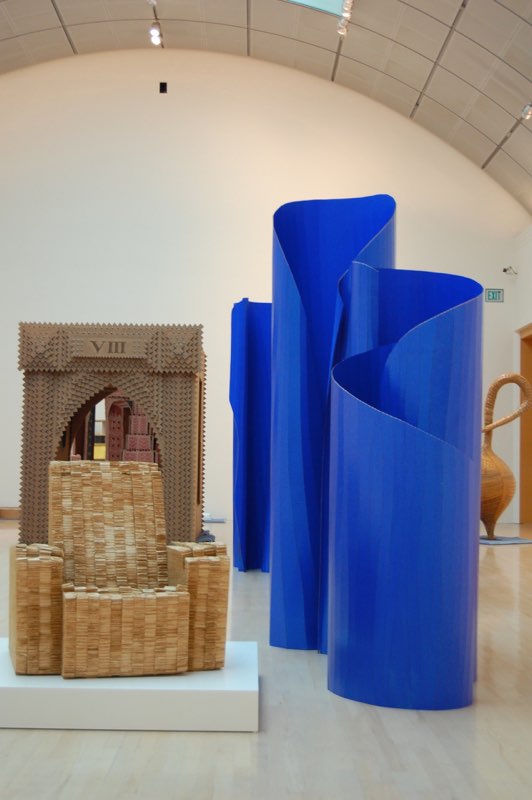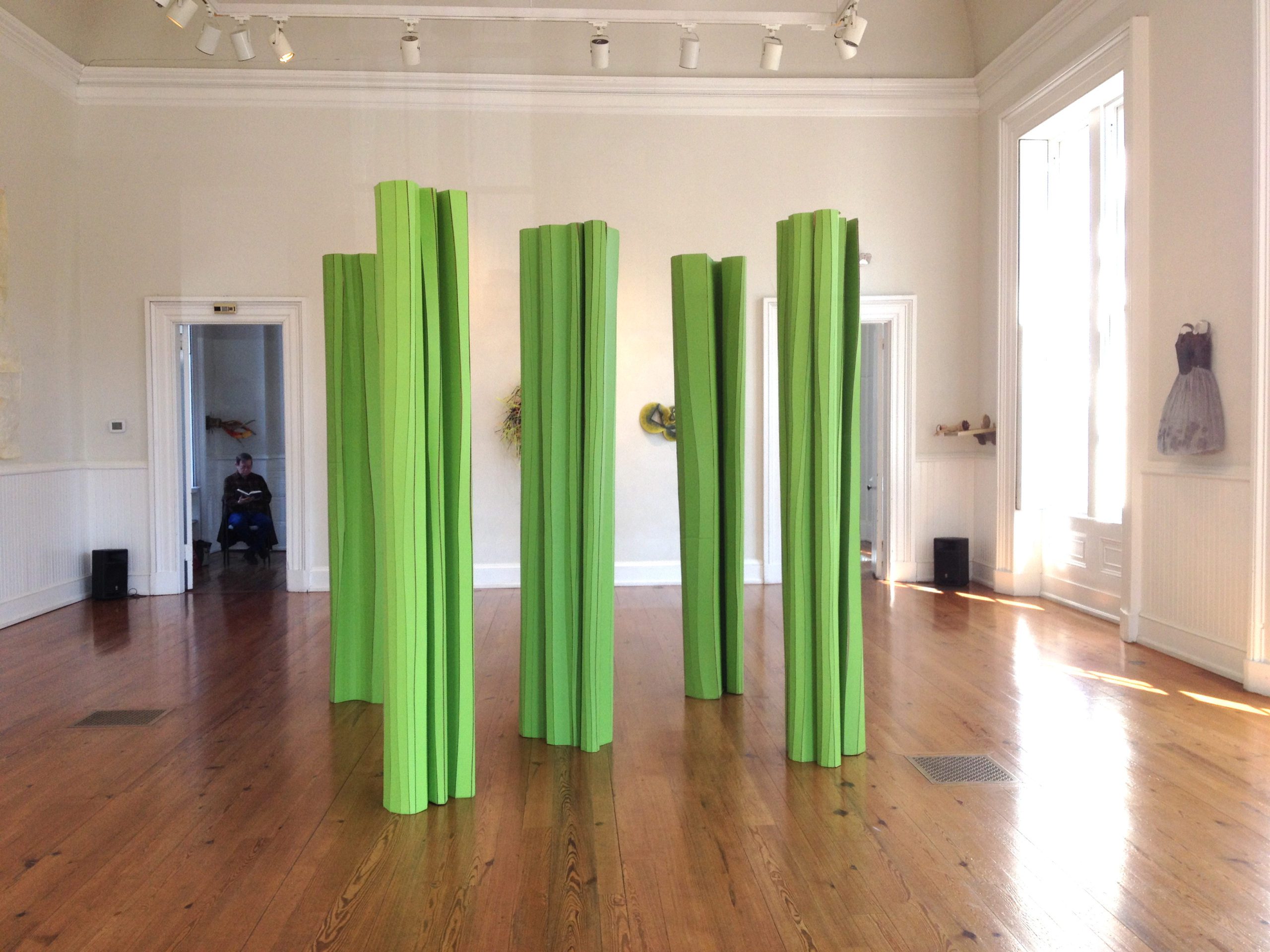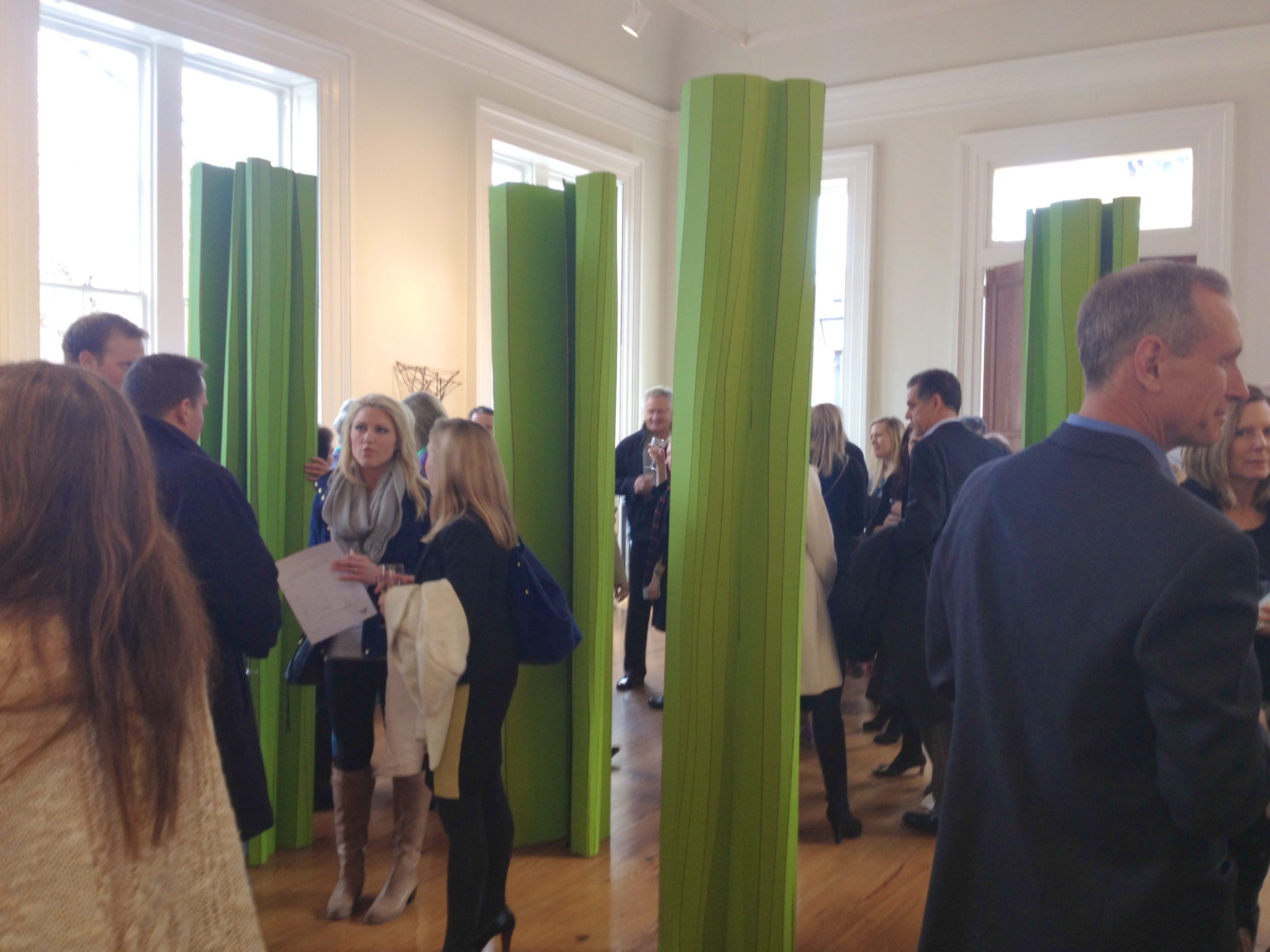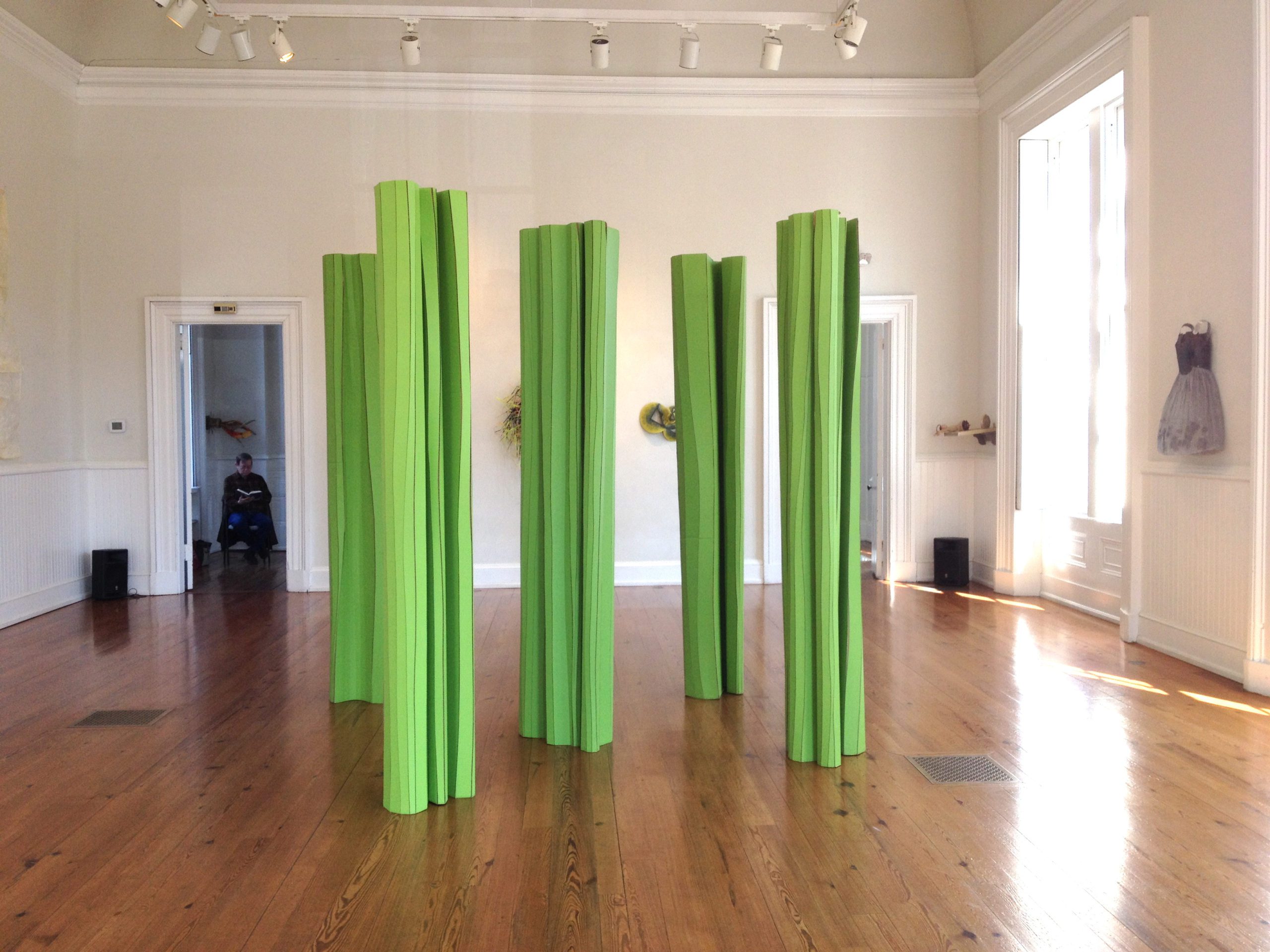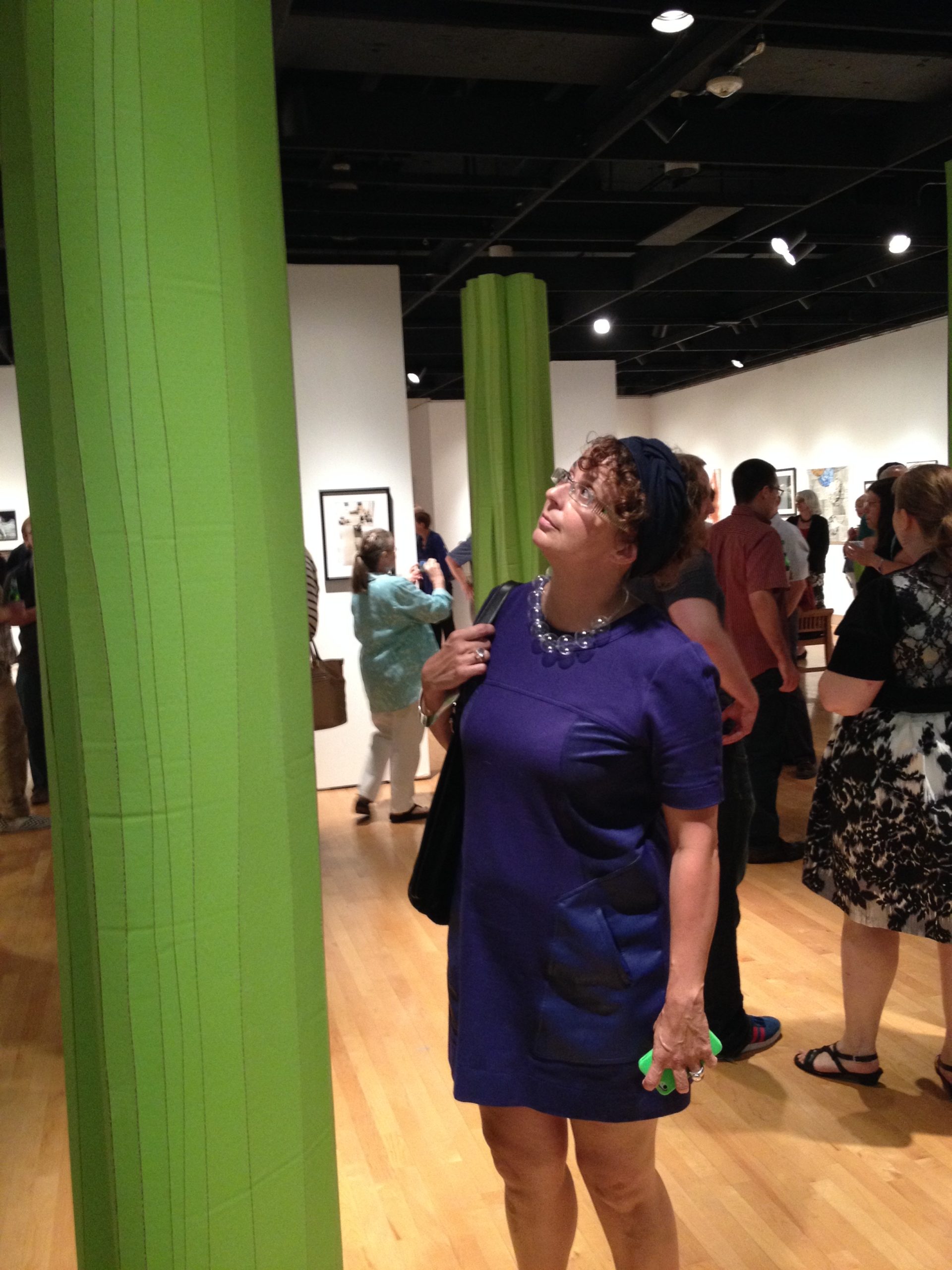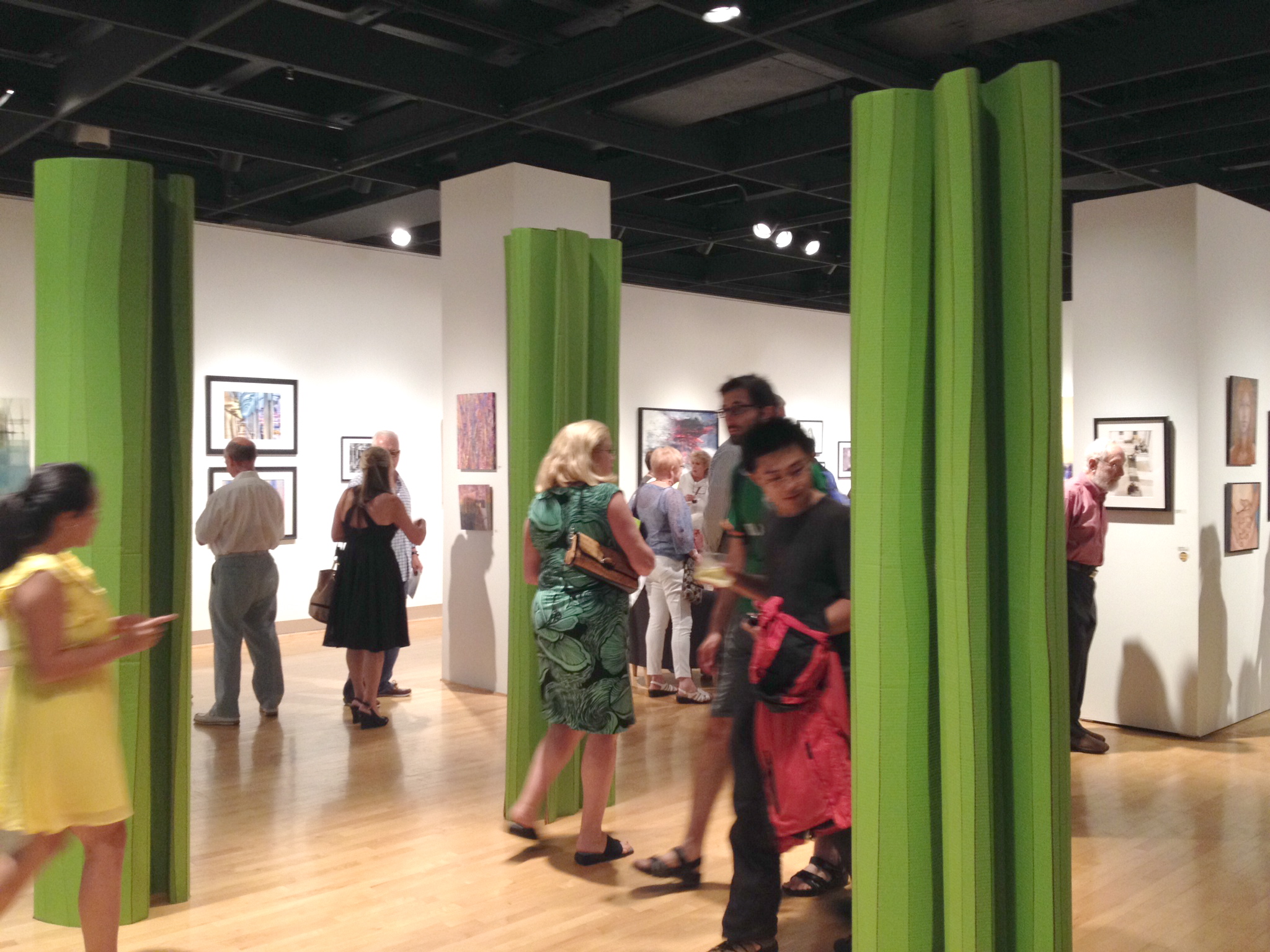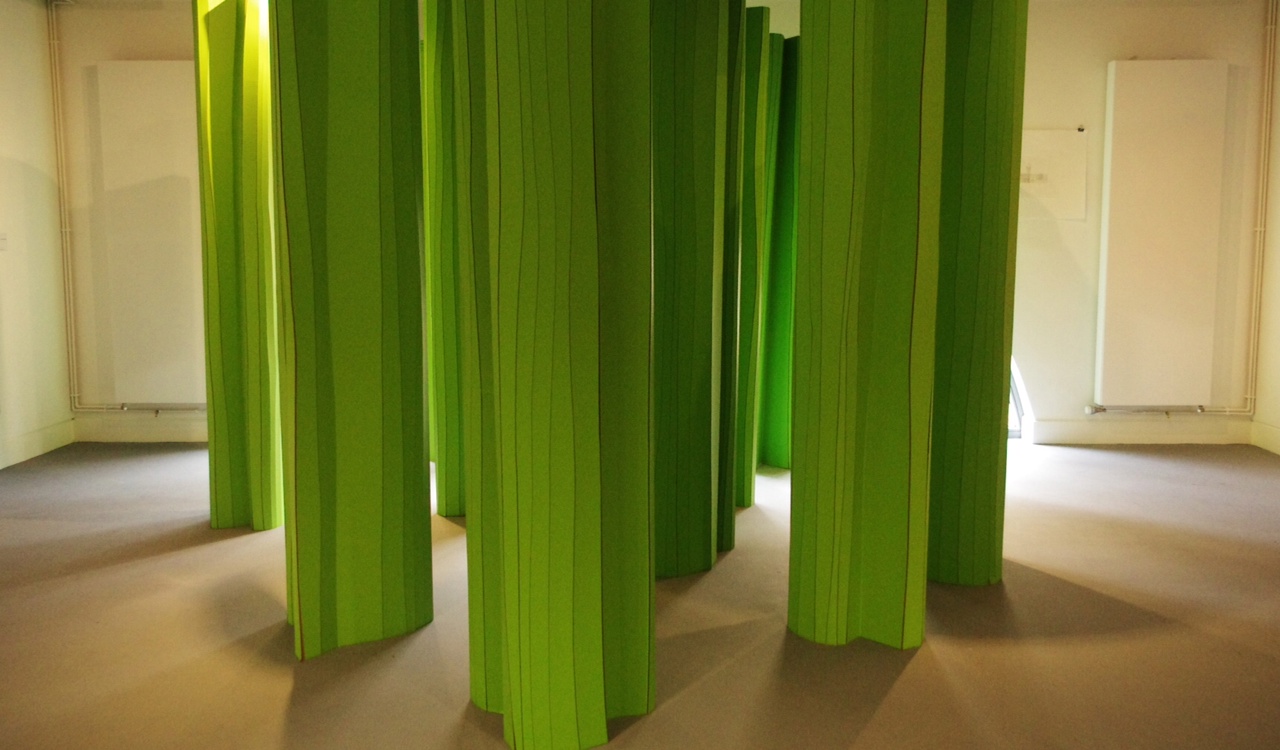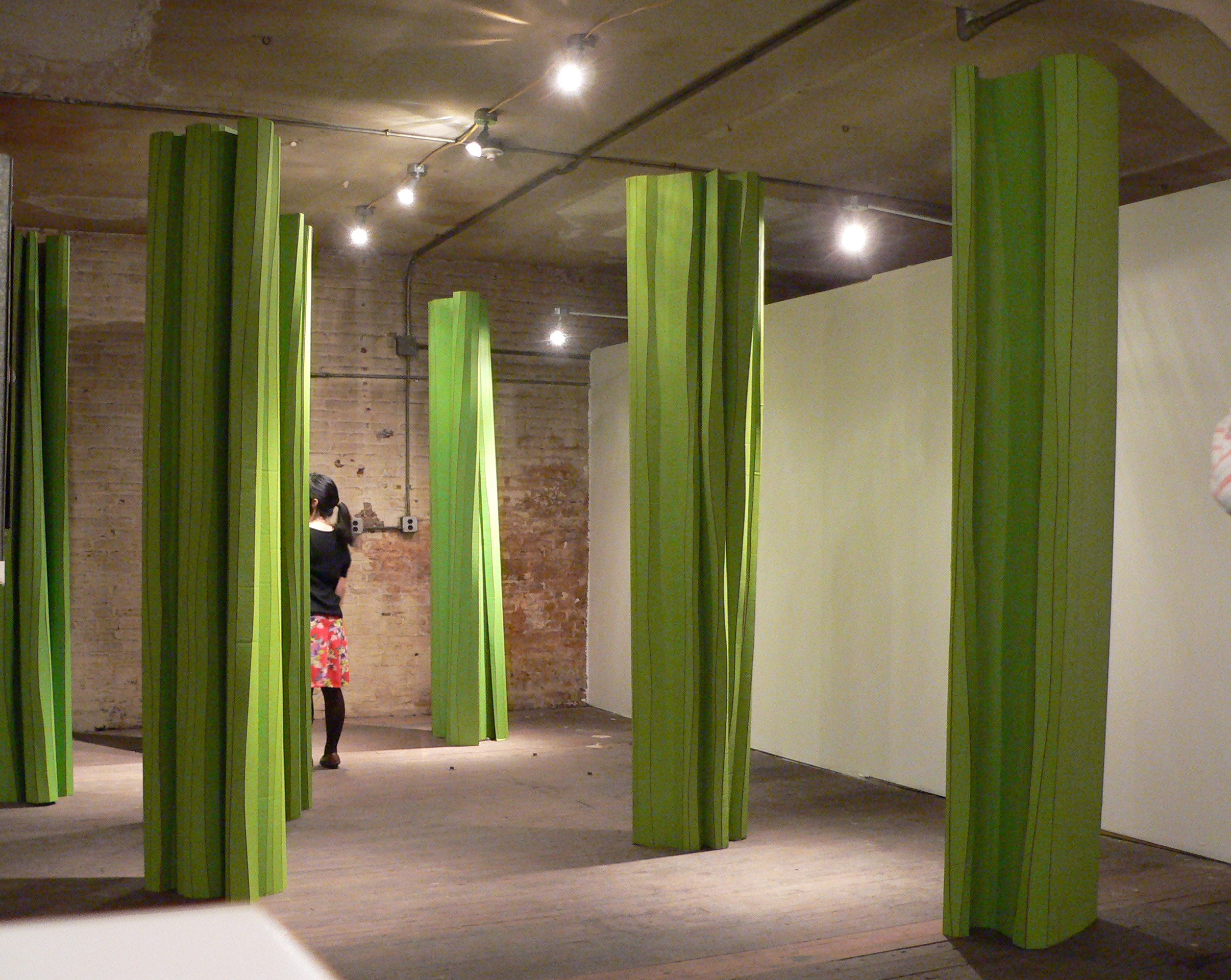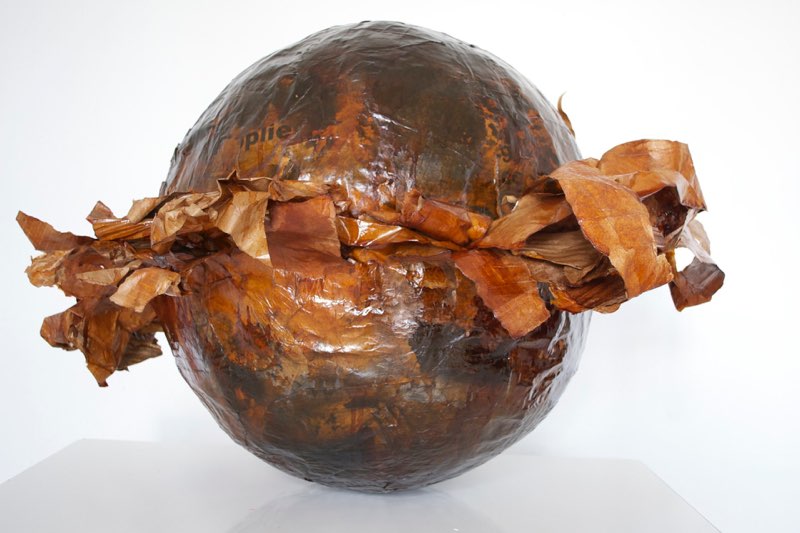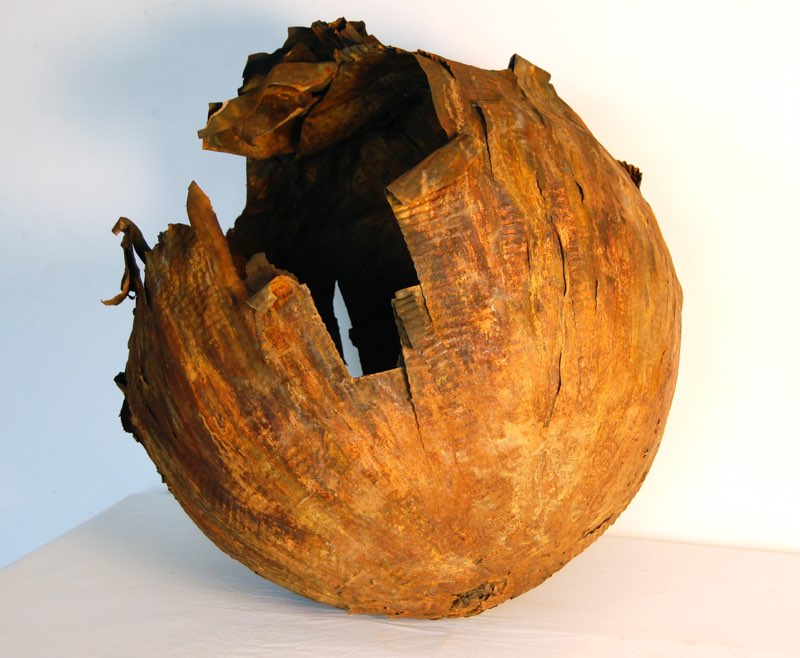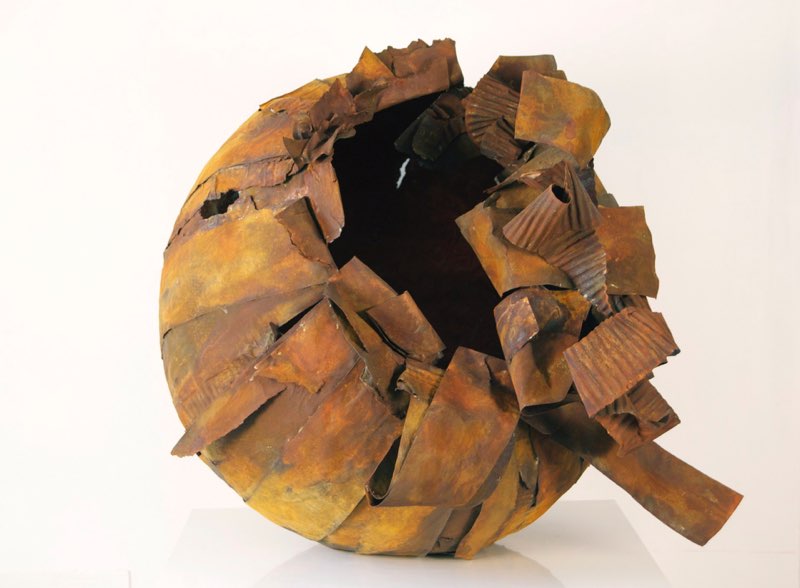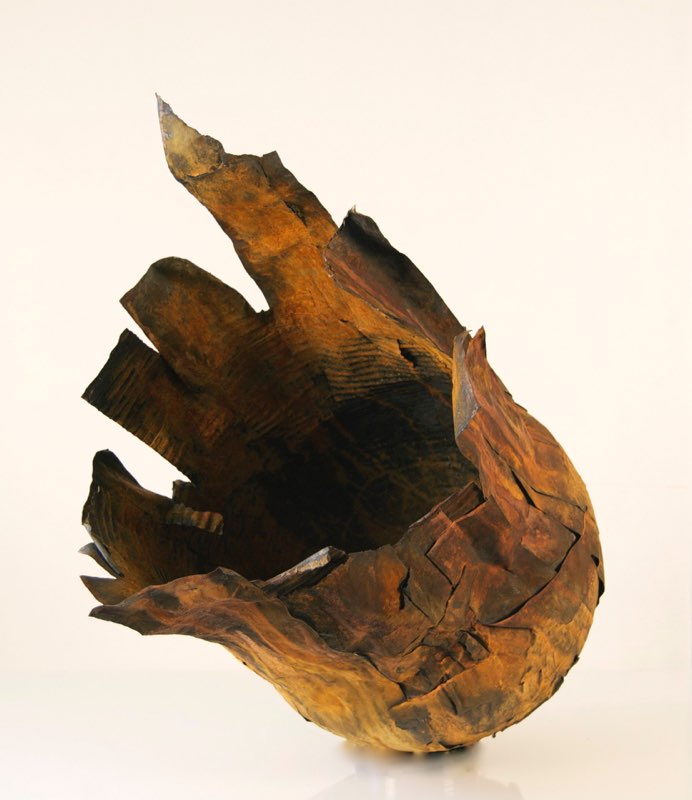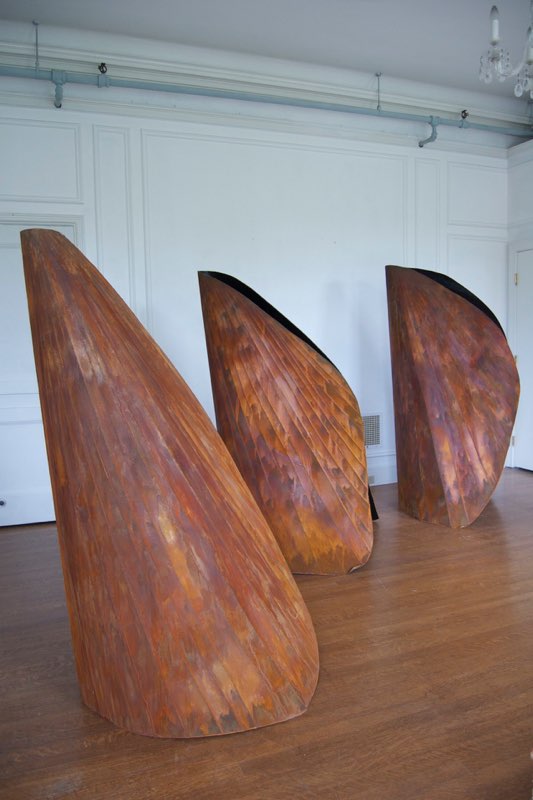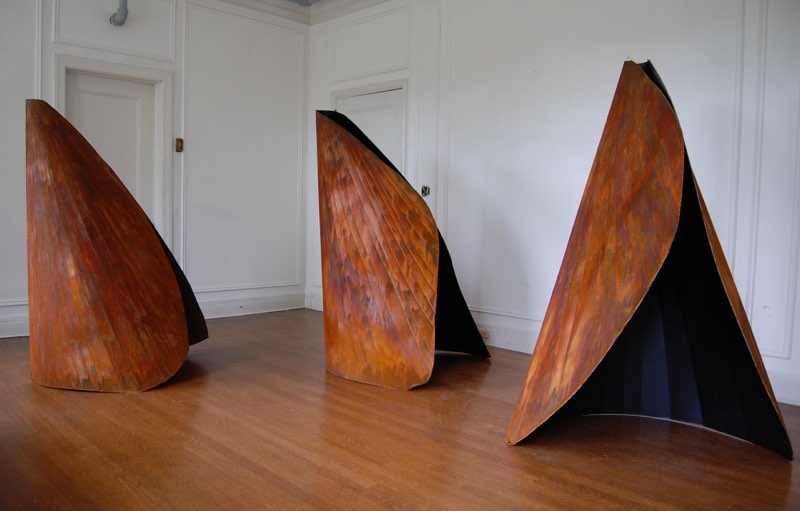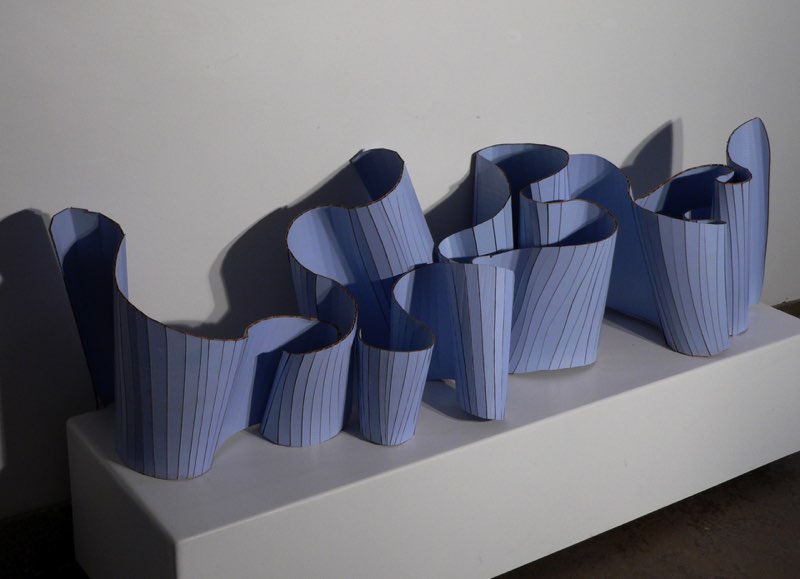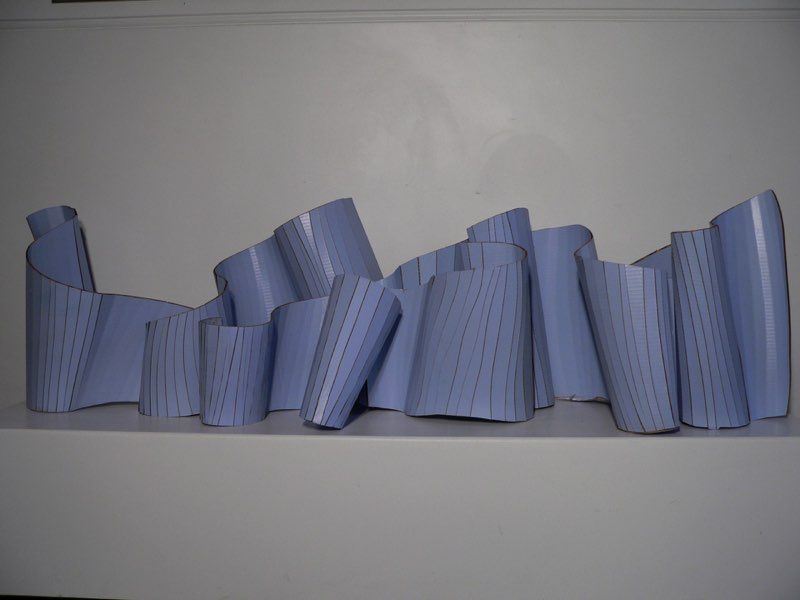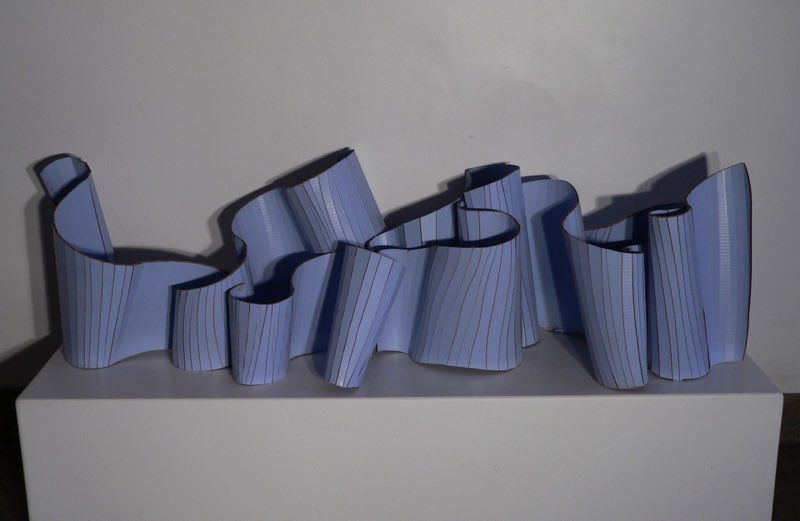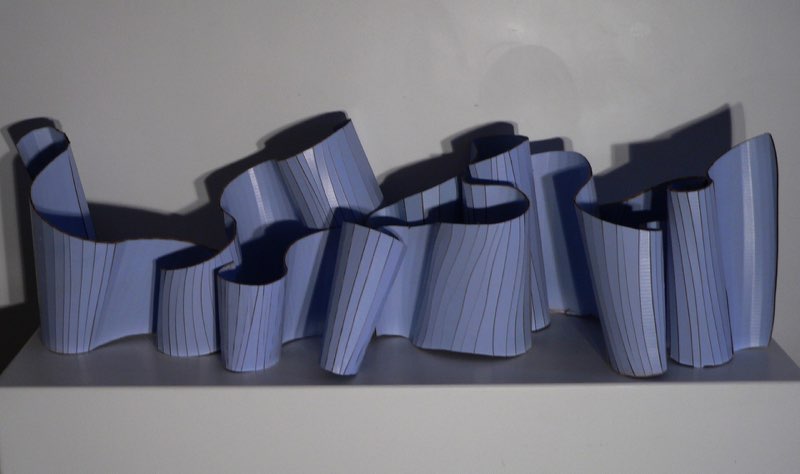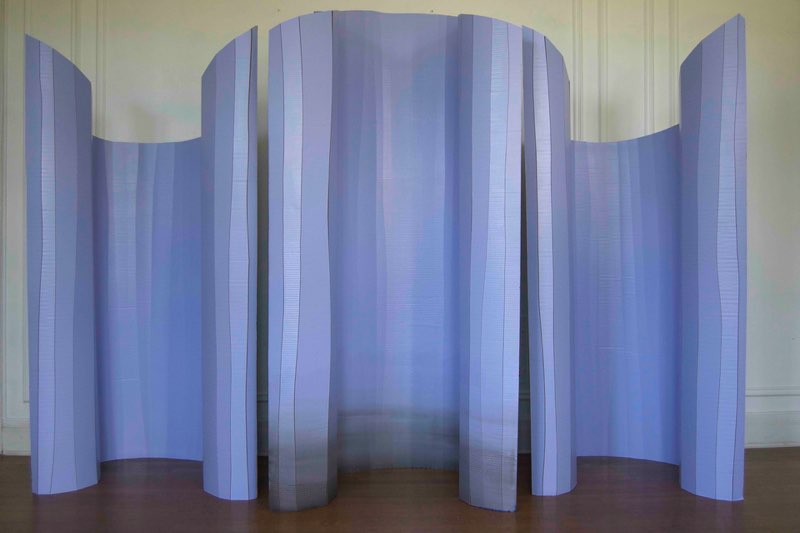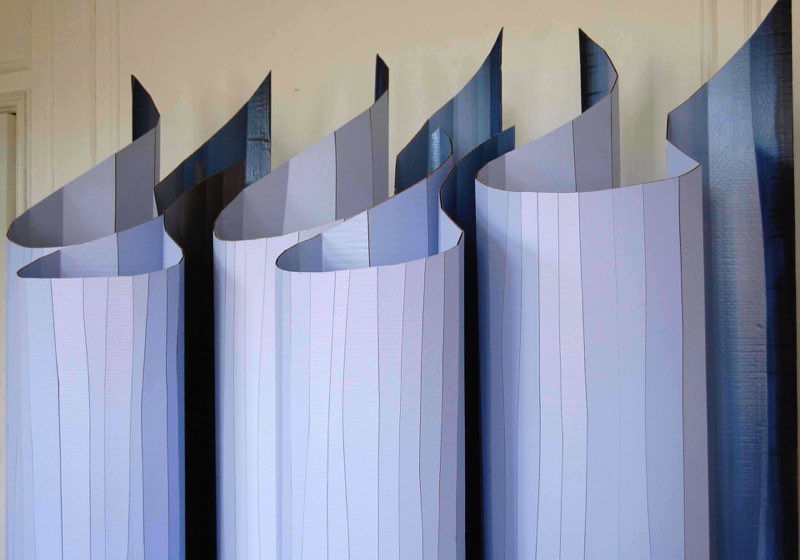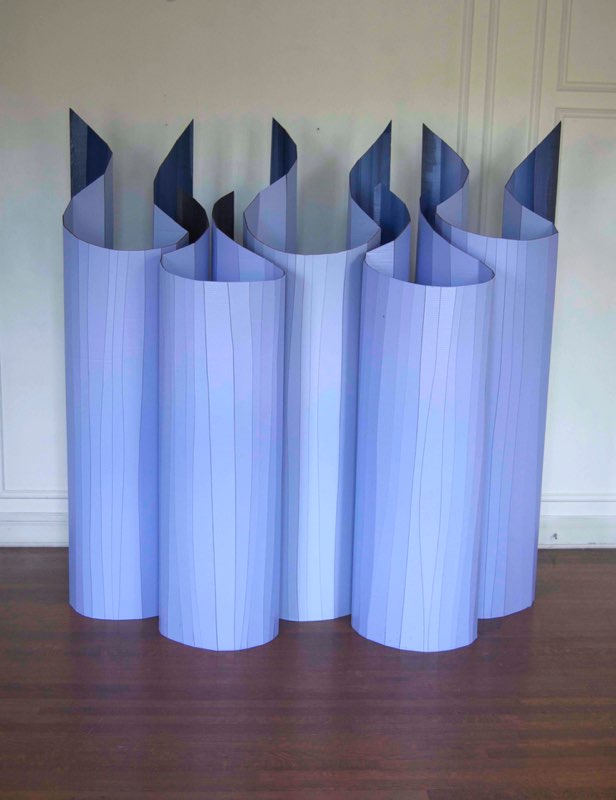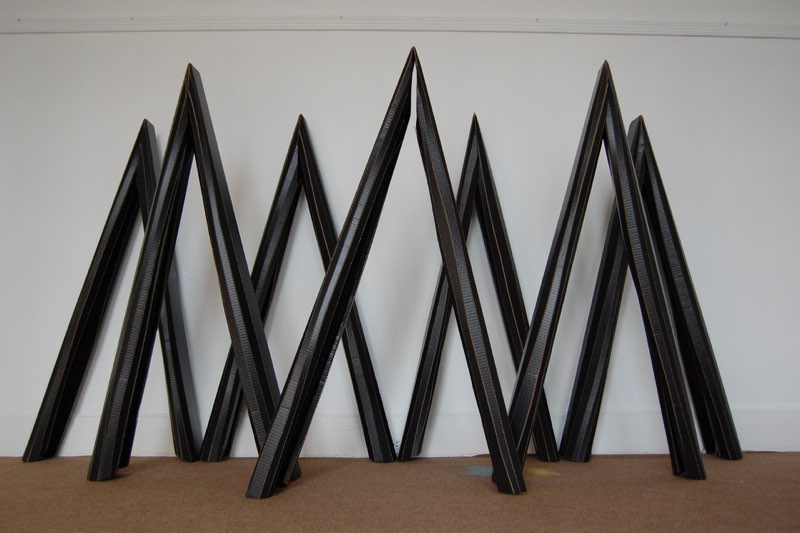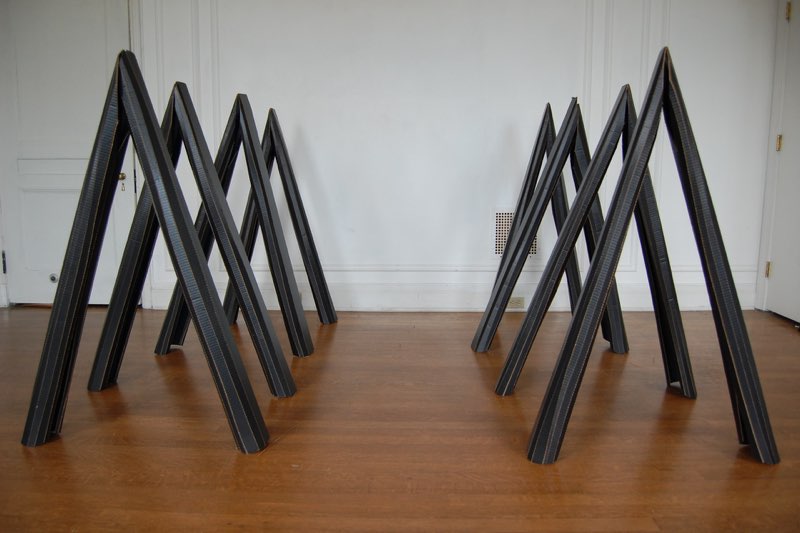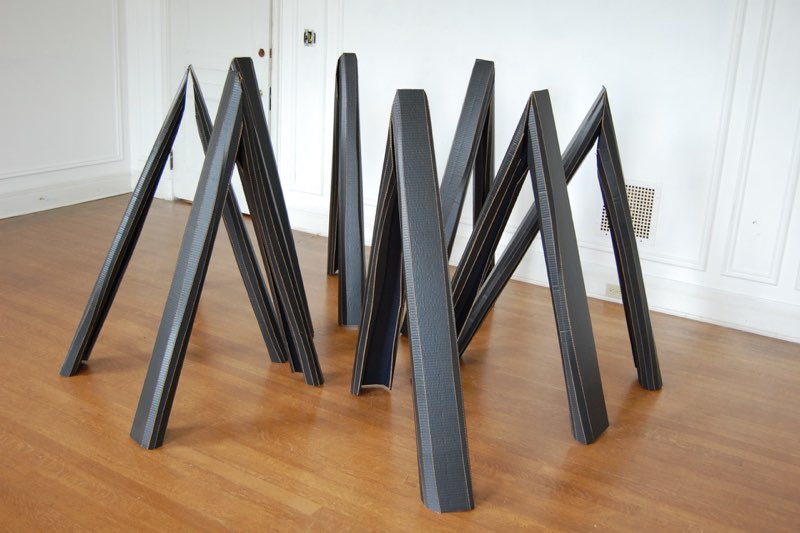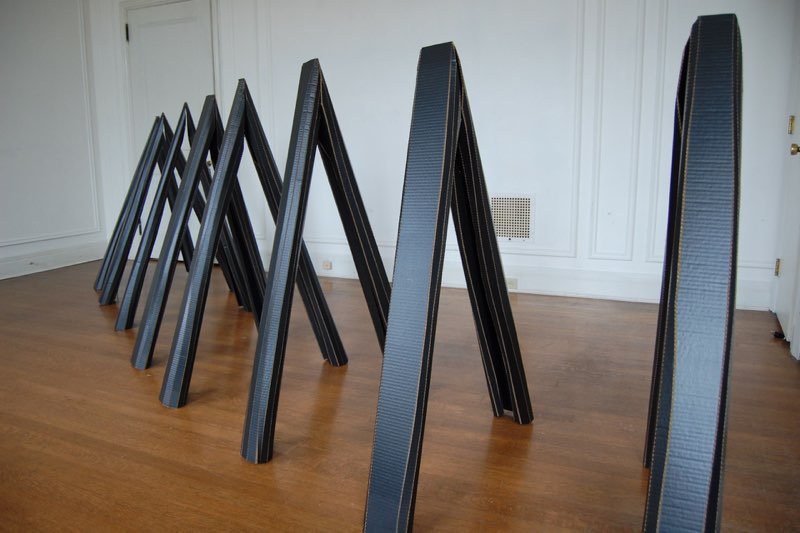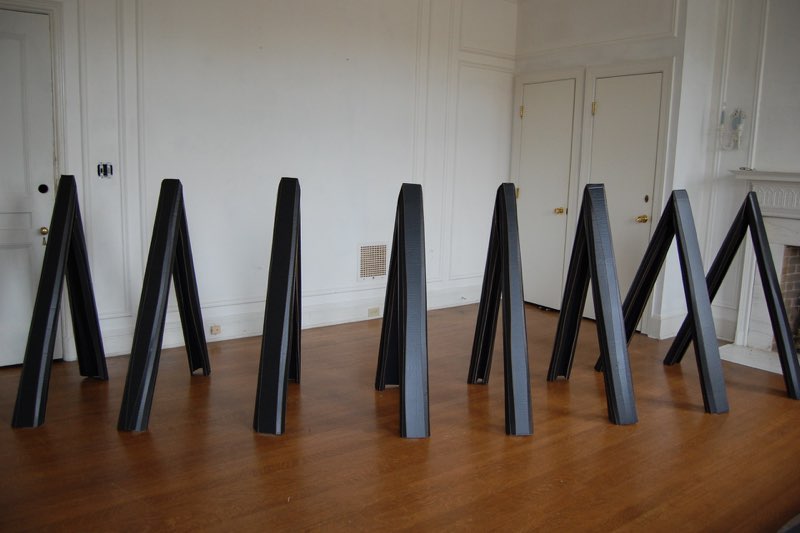Archives
No Man's Land
No Man’s Land
Arlington Arts Center VA
2014
Curated by Cynthia Connolly
I started with the idea of No Man’s Land when I realized that my paintings capture the impression of recent disasters or catastrophes. Entering No Man’s Land allows me to investigate all places and landscapes shaped by human intrusion.
A dystopian view of our environment raises inevitable questions of what will be left of our lifestyle? What are the consequences of terrestrial demand and intrusion when we transform our landscapes into manufactured environments? And, is there a difference in appearance between a natural and manufactured landscape when human action renders the land uninhabitable?
My paintings imitate abandoned and decrepit places through the application of tears, cuts, and shreds to the surface of the cardboard. This process reveals layers of corrugation, tattered textures, and dissolving surface conditions. I paint the surface of the cardboard in a free manner while being sure to capture the rendition of details. I prefer a rough and raw mode of spills and sketch-like gestures instead of a polished look. I paint with huge brushes and blades to express the spontaneity of action and gestures of my theme. Each of my works is prepared with sensual textures and uneven surfaces so the viewer may explore the material’s full potential. These strategies provide the basis for No Man’s Land motifs, calling to mind a state of bleakness, neglect, and instability in a dehumanized world.
Walls of Love
Walls of Love
45 modular sculptures, various sizes, installation, acrylic on corrugated cardboard
Albright-Knox Art Gallery, Buffalo NY
Beyond Western New York – Biennale
2007
“Walls of Love” represent a juxtaposed concept of overcoming inner and outer barriers. In their message, they are peaceful and playful while at the same time obstructing and intrusive, reflecting the way humanity creates spaces and boundaries between cultures and nations.
Across culture and history, civilizations have built walls as defense systems, creating a global atmosphere of separation, isolation, and, consequently, alienation, all of which hinders us from being communicative, curious, and social.
“Walls of Love” paradoxically express all the positive attitudes, characteristics, and intentions which make us human. Their red color appears warm, inviting, attractive. They are pliable, easily formed with structural cuts, and changeable, thus becoming inclusive and exclusive, and interactive in their various forms.
Each segment creates a sphere. By adding more into vivid and dynamic formations, each element interacts with others, showing the balance between stability and movement, equality and individuality, welcoming and rejecting attitudes, embracing and defending moments. When single modular elements are grouped in those playful moments, various dynamic relationships are formed. At the same time, the viewer moves through the installation being in a constant flow of changing perspectives with each step. “Walls of Love” exude certain magic on the viewer who stays transfixed while moving through the space, constantly being made aware of the work’s theme.
Thus, with my work, just as in life, barriers or walls that seem to define our lives – appearing solid and sturdy – are transformed into a statement of impermanence. Seemingly rigid and immovable cardboard is revealed as fragile and flexible, even inviting and embracing when viewed from changing perspectives.
This installation began simply as corrugated cardboard – mundane material for industrial and economic use, artless and unattractive in appearance and purpose. I hope that common cultural artifacts are transformed into artful and expressive, bringing down the “walls” that separate us as humans.
Lost Spaces
Lost Spaces
Kunstverein Paderborn, Germany
2006
Artemis Herber circles the theme of space in her paintings and objects in an exciting and, at the same time, meditative way.
The viewer looks through the artist’s eyes, who lives in the USA, at abandoned places, inanimate places. It is not uncommon for these places and spaces to exude something strange. The artist’s specific perception isolates details of reality and allows them to solidify into artificial fragments of reality. Often there are impressions perceived as if from a moving car: motorway bridges, bus stops, shopping centers, electricity pylons, industrial landscapes – lost spaces.
In Artemis Herber’s paintings, objects, and installations, space is the all-important category. The exhibited modular sculptures (“wraps”) only use cardboard, acrylic, and aluminum paint. The artist rolls and bends her material in and around the space.
Artemis Herber’s playful, experimental understanding of art is expressed in the “wraps” – the irony of the name catches the eye. The desire arises to actually go into the rooms opened up by the objects and let them affect you without restriction and without the distancing that is often inherent in viewing art.
Artemis Herber umkreist in ihren Gemälden und Objekten spannungsvoll und zugleich meditativ das Thema des Raumes.
Der Betrachter blickt durch das Auge der in den USA lebenden Künstlerin auf verlassene Plätze, unbelebte Orte. Nicht selten scheinen diese Orte und Räume etwas Fremdartiges auszustrahlen. Die spezifische Wahrnehmung der Künstlerin isoliert Details der Realität und lässt sie zu künstlichen Wirklichkeitsfragmenten gerinnen. Oft finden sich wie aus dem fahrenden Auto wahrgenommene Eindrücke: Autobahnbrücken, Bushaltestellen, Einkaufszentren, Strommasten, Industrielandschaften – Lost Spaces.
Nicht nur in ihrer Malerei, sondern ebenso in Artemis Herbers Objekten und Installationen ist der Raum die alles entscheidende Kategorie.
Die ausgestellte Serie der Wraps kommt ausschließlich mit dem Material Pappe und den Mitteln von Acryl- und Aluminiumfarbe aus. Die Künstlerin rollt und biegt ihr Material im und um den leeren Raum.
In den Wraps – die Ironie der Bezeichnung springt ins Auge – äußert sich das spielerische, experimentierende Kunstverständnis Artemis Herbers. Es entsteht die Lust, sich in die durch die Objekte eröffneten Räume tatsächlich hinein zu begeben und sie uneingeschränkt und ohne die der Kunstbetrachtung oft eigene Distanzierung auf sich wirken zu lassen.
Found/Seen/Made
Found/Seen/Made
Steven Dobbin/ Artemis Herber/Joseph Hyde
Stevenson University Gallery MD
2011
Curated by Diane DiSalvo
Coats
Coats
Modular sculptures, various sizes, installation, acrylic on corrugated cardboard
This End Up: The Art of Cardboard
San Jose Museum of Art CA
2008
Curated by Jodi Throckmorton
The artists in this exhibition challenge the limits of cardboard by investigating topics ranging from formal concerns to social commentary and engineering. As a relatively cheap material, cardboard allows artists to work on a large scale that might not be otherwise possible. This exhibition revealed ways that artists challenge the limits of cardboard by investigating topics ranging from formal concerns to social commentary and engineering. Artists include Joan Brown, Shannon Goff, Frank O. Gehry, Robert Rauschenberg, and others.
Stems
Stems
since 2011
exhibited and installed in various venues and public art
My ongoing work of Stems, made of corrugated cardboard, is based on the idea of recreating trees destroyed by environmental disasters (storms, bug pests, etc.). I preserve, and copy shapes of found stumps, reviving dead trees through an installation visitors can interactively explore. Inspired by nature, now open realms of corrugated cardboard, recyclable and sustainable, the original material of the trees is integrated and transformed at the same time, encouraging visitors to wander through the installation contemplating memories of what we have lost in nature.
As an artist, my mission is to generate awareness of certain conditions I find in my environment. Tree stumps – signs of cumulative devastation in the region – are my motivation to recover and recreate natural forms as an artistic concept that delivers a message of the loss of nature. The single segments of painted cardboard create safe, warm realms and remind us of our nature – pliable, easily formed, and changeable – simultaneously inclusive, exclusive, and interactive. The bright, fresh green colors inspire a dreamlike stroll through a vivid, optimistic environment, artificial but without denying our nature – a walk between illusion and reality.
Artemis Herber
Globes
Globes
Since 2011 ongoing, presented in various exhibitions
Made of corrugated cardboard, my Globes appear fragile and partly broken with holes, vents, rifts, flaws, and cracks, emphasizing a fragmentary character of found or antique pieces. I use paint that creates a chemical process of rust or copper oxidation or shellac as a traditional conserving coat for paintings. Transforming cardboard, a mundane, industrial material of daily use, meanwhile a proclaimed environmental product, I suggest the idea of a temporary and passing internal conception of containers in terms of a sphere or globes.
“Globes” investigate current changes from traditional sustainable materials at the center of the industrial revolution to superficial compatible but in the core degraded materials. Cardboard has become the ubiquitous signature for our globalized consumerism – “the beige gold,” now the market indicator of global trade – conceptualized as burst bubbles, spheres, or containers. Transition in time reflects on material transformation, offering a juxtaposition of permanence and impermanence. Although created from sustainable material, the work reflects on contradictory themes of fleeting, rust-covered decaying and denoting the temporary character.
Artemis Herber
Shelters
Shelters
Since 2011 ongoing, presented in various exhibitions
Made of corrugated cardboard, my Globes appear fragile and partly broken with holes, vents, rifts, flaws, and cracks, emphasizing a fragmentary character of found or antique pieces. I use paint that creates a chemical process of rust or copper oxidation or shellac as a traditional conserving coat for paintings. Transforming cardboard, a mundane, industrial material of daily use, meanwhile a proclaimed environmental product, I suggest the idea of a temporary and passing internal conception of containers in terms of a sphere or globes.
“Globes” investigate current changes from traditional sustainable materials at the center of the industrial revolution to superficial compatible but in the core degraded materials. Cardboard has become the ubiquitous signature for our globalized consumerism – “the beige gold,” now the market indicator of global trade – conceptualized as burst bubbles, spheres, or containers. Transition in time reflects on material transformation, offering a juxtaposition of permanence and impermanence. Although created from sustainable material, the work reflects on contradictory themes of fleeting, rust-covered decaying and denoting the temporary character.
Artemis Herber
Vessels
Vessels
2011 -2012
Vessels with their big womblike rounded walls give the idea of being harbored in a safe realm in a world of constant flow. Through openings and various formations with ever-changing perspectives, visitors can walk in and around Vessels. Ideas of permanence and impermanence, the work reflects contradictory themes of the temporal or fleeting created from sustainable material appearing rust-covered and decaying and denoting the temporary character of our self-contained lives.
Through replicating and recreating a vessel’s form and transforming cardboard into a pretentiously rusty surface, the object itself evolves as an artifact and an icon of an artifact simultaneously. The outcome is a new sculpture (an artifact of an artifact) that resembles the old one, but the new and old are not the same. Vessels become metaphors of an artistic artifact of a culture. They appear fragile, partly broken and rusty, referring to memories of our everyday life, of manufactured landscapes, creating a past that is nearly an ancient artifact of today.
Century Center Artspace
Flags
Flags
On a Pedestal and off the Wall
Site-specific work, corrugated cardboard, amount and size of elements variable
Group exhibition at the Sculpture Center, Cleveland
Third annual exhibition of small sculpture 2007
Curated by Don Harvey
With 27 works of art by 21 sculptors of this geographical region, On A Pedestal and Off The Wall aptly represents the breadth of exploration by contemporary sculptors expressed in an unfettered array of media – including porcelain, feathers, and concrete, glass, cardboard, wax, and bronze, variously combined household items, silicone and human hair, a video of a performance piece, and an installation. The sculpture addresses international politics, the natural world, social interaction, technology, personal demons, and the formal concerns of sculpture as an art form.
Wings
Wings
Presented in various exhibitions
Acrylic on corrugated cardboard sizes variable
2012
With my series Wings, I explore how to merge artistic expression through painting with sculpture. When does a sculpture evoke painterly visions? When does a painting emerge from its two-dimensional existence into a three-dimensional construction, its curves weaving and undulating, yet still fixed on a carved and cut surface of cardboard? Individual segments of WINGS are minimalist constructions of concave and convex cardboard walls, extended on both sides with a higher density of front cuts, creating spatial sculptures which extend their inhabited space. With minimal use of color, tone, and gradation, the sculptural arrangement can appear scenic and, at the same time, architectural, with the bold, womblike segments emphasizing a sculptural construction.
Single sculptures, groupings, or installation
The color palette of grey-tinted in lavender and blue shades allows for both perspectives: the reflection of lights and darks brings out the sculptural character of the work, while the shades of color add a natural, airy lightness. The particular curved surface cut of the cardboard allows viewers to see inside and outside of the sculptures simultaneously. By combining two and three-dimensional perspectives in one object or one installation, I create moments of illusion when elements of painting and sculpture reinforce each other and contradict each other by being unified in a simple sheet of corrugated cardboard. Altogether, with their specific shape and especially with their tapered endings, color, light, and form, WINGS concretize movement and visualize vivid dynamics.
Barricades
Barricades
Presented in various exhibitions
Acrylic on corrugated cardboard, 50 x 6 x 30″, height and depth variable
2012
My sculptural series Barricades explores how specifically-shaped formations create an index of social conflict and how societies do (or do not) find solutions to those conflicts. Barricades embody the concept of current unresolved global confrontations (Syria, Egypt, Greece) and centuries of historical construction representing a language of fear, defense, and exclusion (Great Wall of China, Western Wall, Berlin Wall, Mexican/US border). I purposely juxtapose a common visual interpretation of “barricades” with the material I use –corrugated cardboard – which is sturdy but not lastingly durable, stable, or resistant. Creating a visual barricade (which we suppose is a solid defense system between forces in conflict) out of cardboard ridicules the inherent meaning. It converts the construction itself into absurdity. The work conceptually questions methods of frontiers and barriers in social and political systems.
I offer two bodies of work, each exploring a different facet of this paradox. Shelters and Barricades can be interpreted as zones where individuals or communities look for protection in dangerous situations or take part in aggression and unresolved conflict. Both series combine optimistic promises (protection for those in need or self-defense in situations of retreat or escalation) and negative consequences (social injustice, economic disparity, or political conflicts) of unstable conditions.
